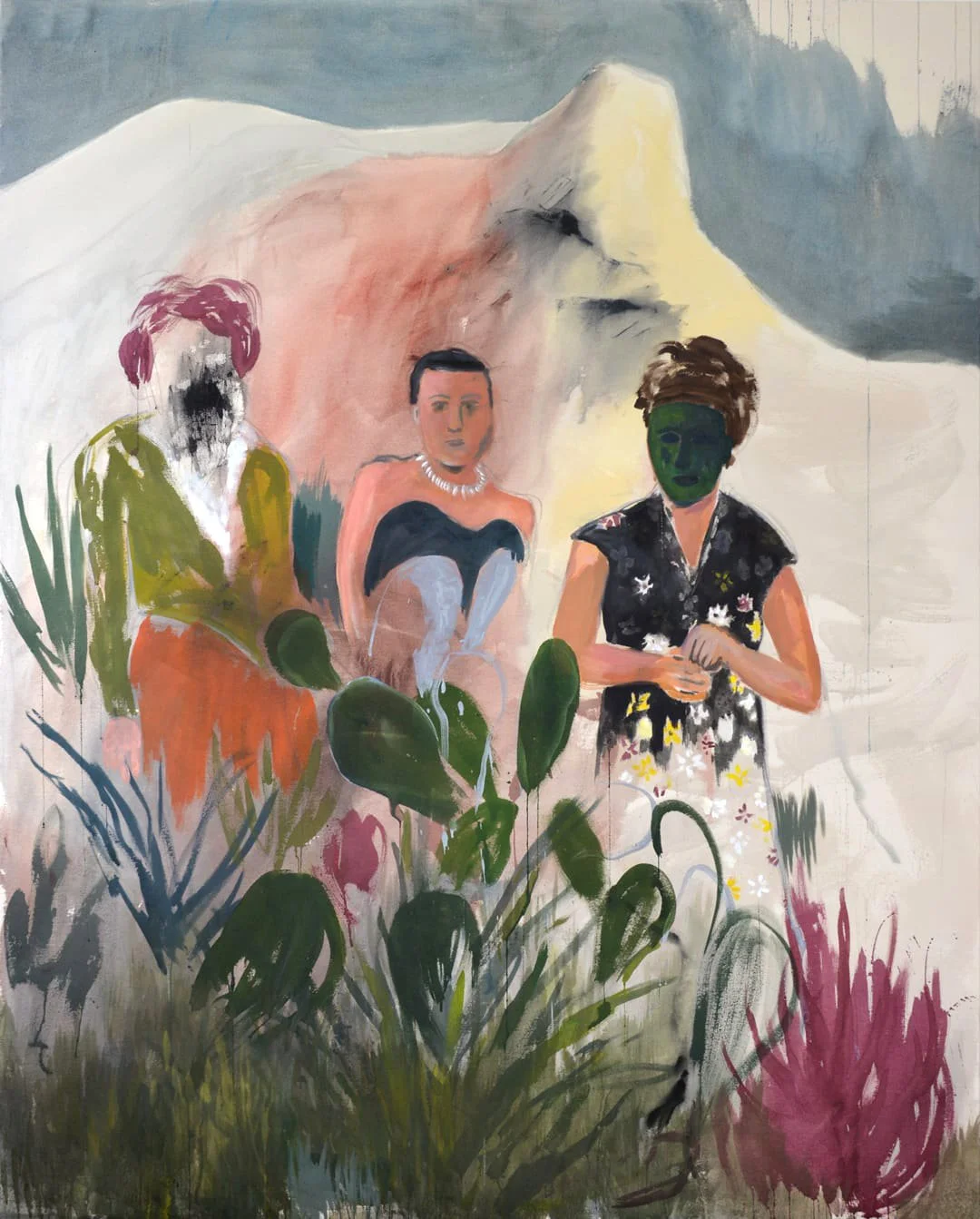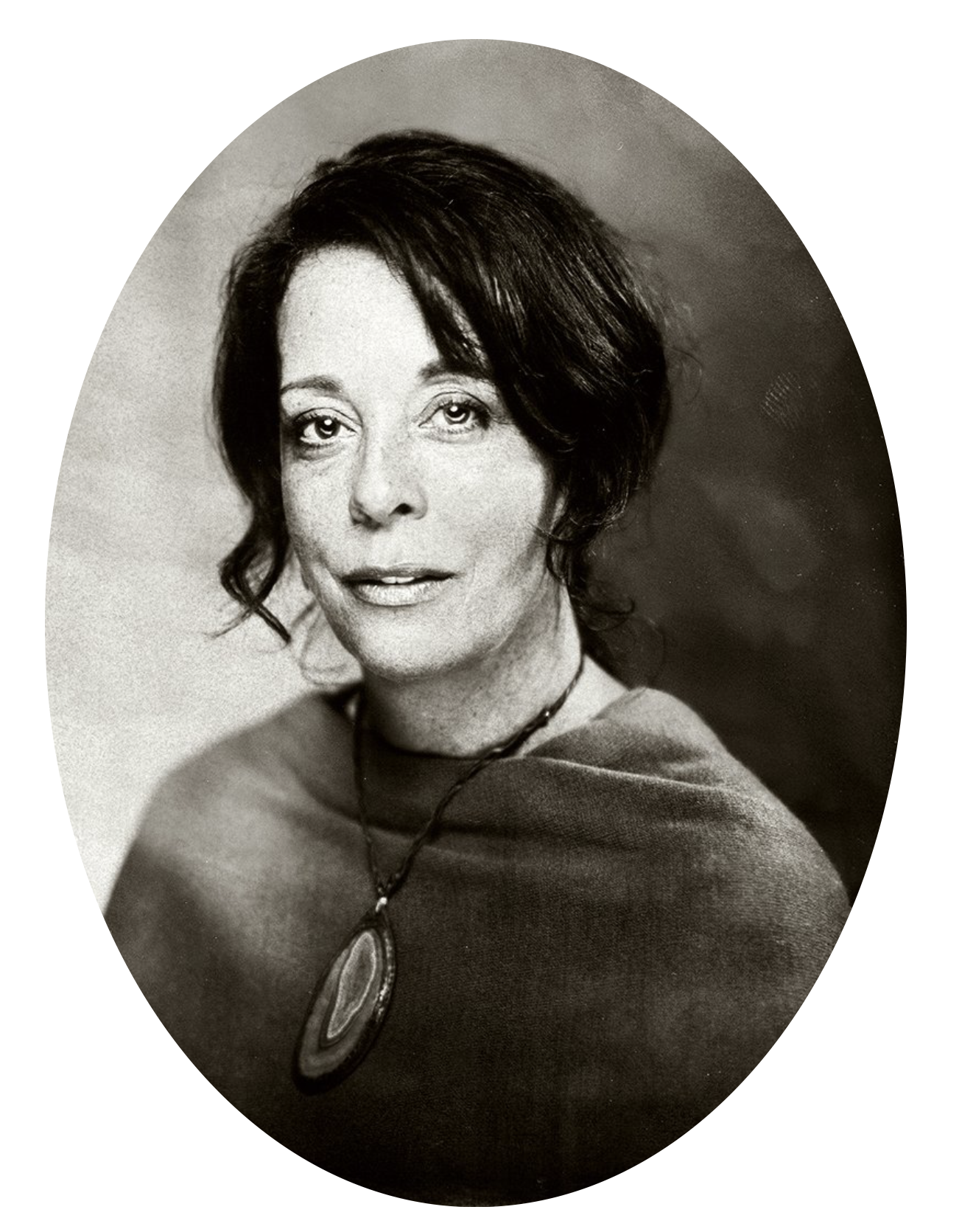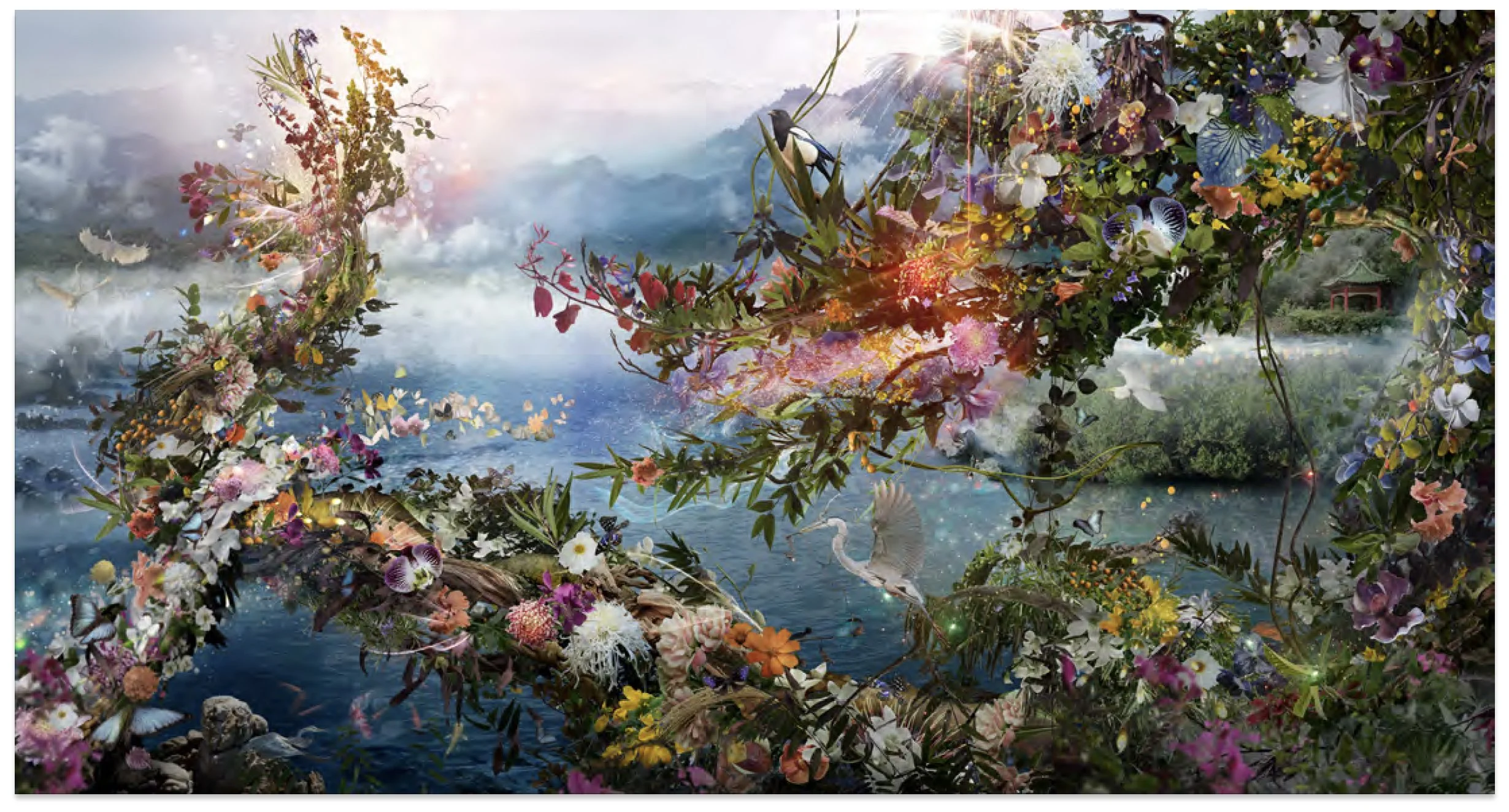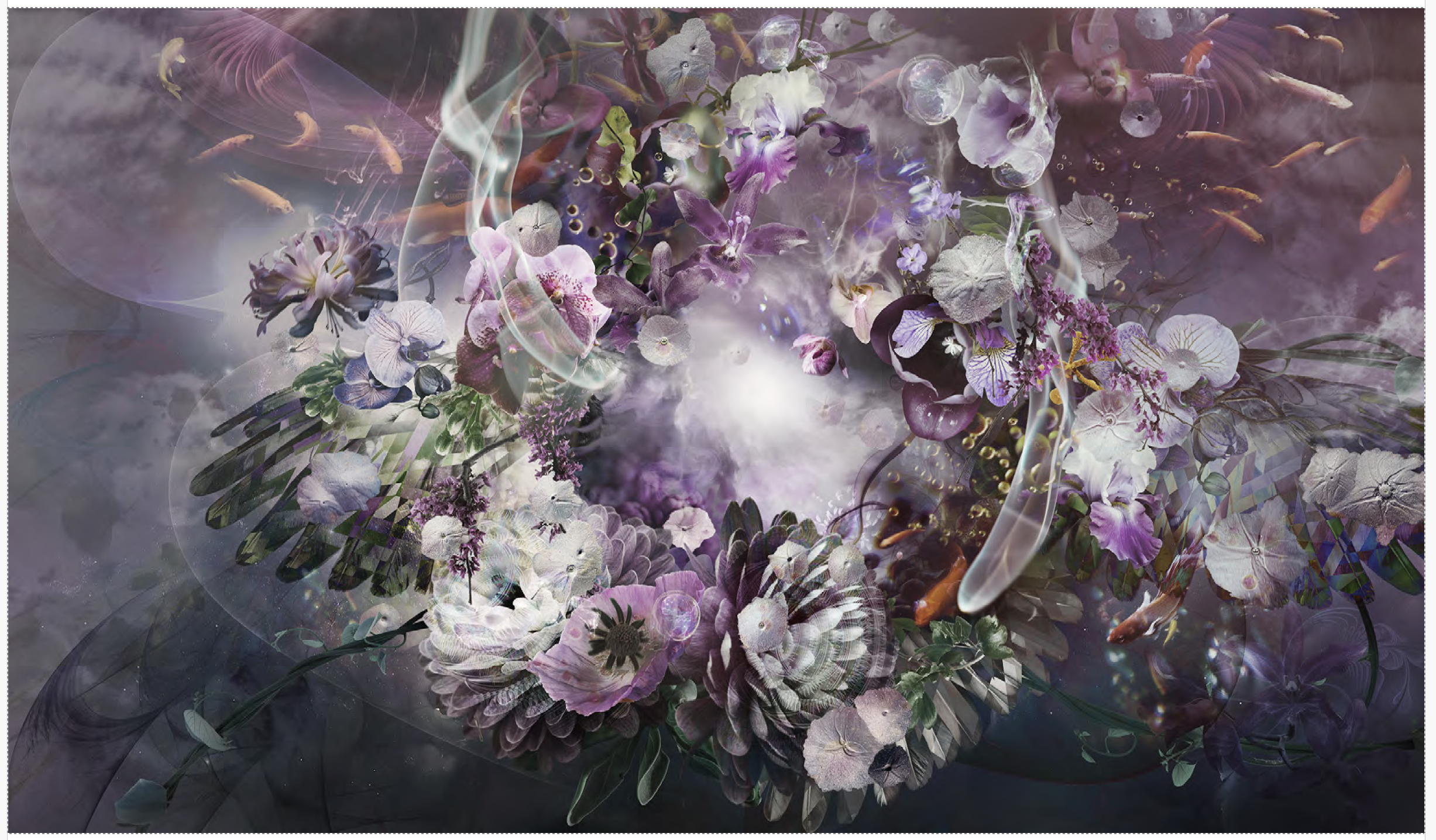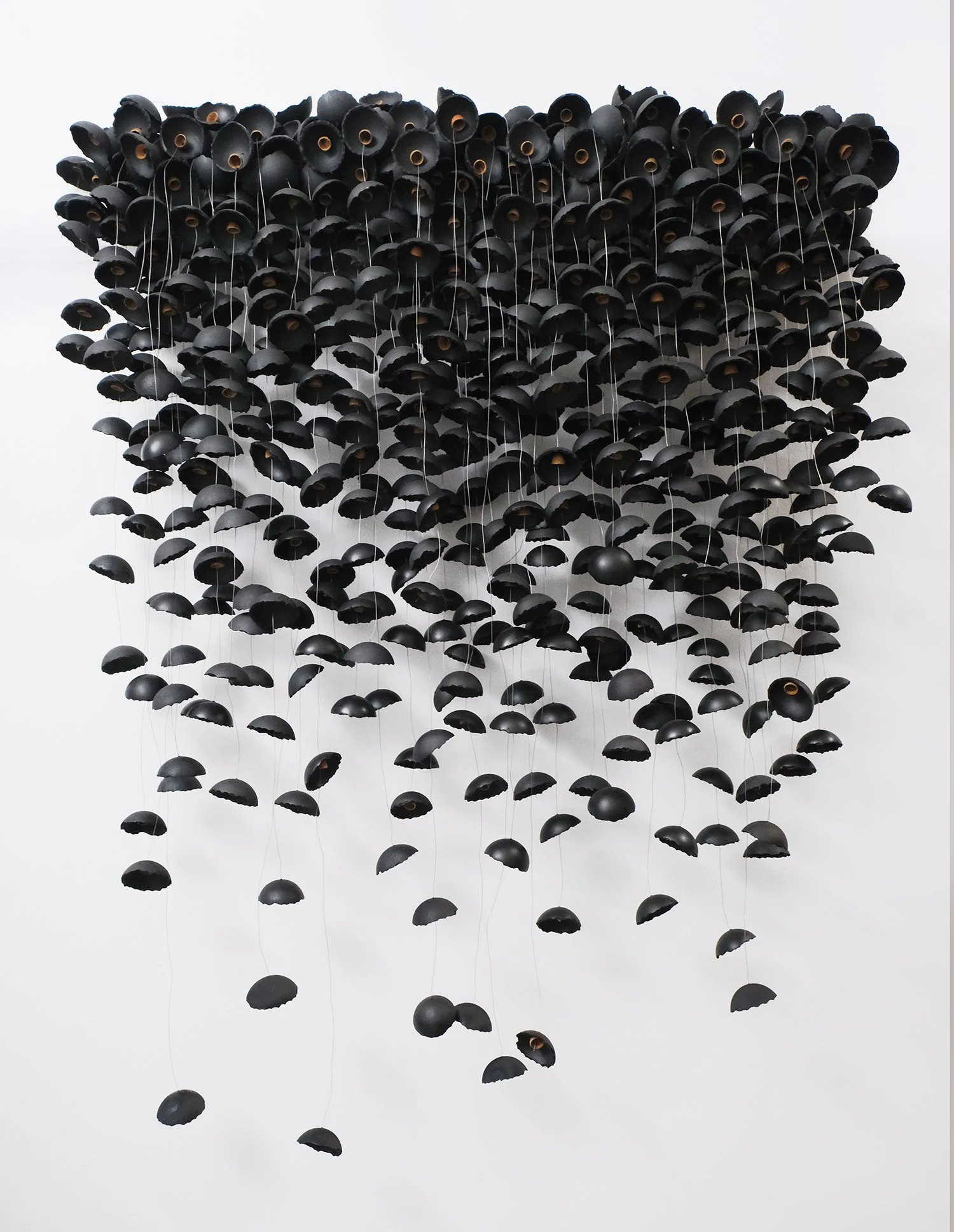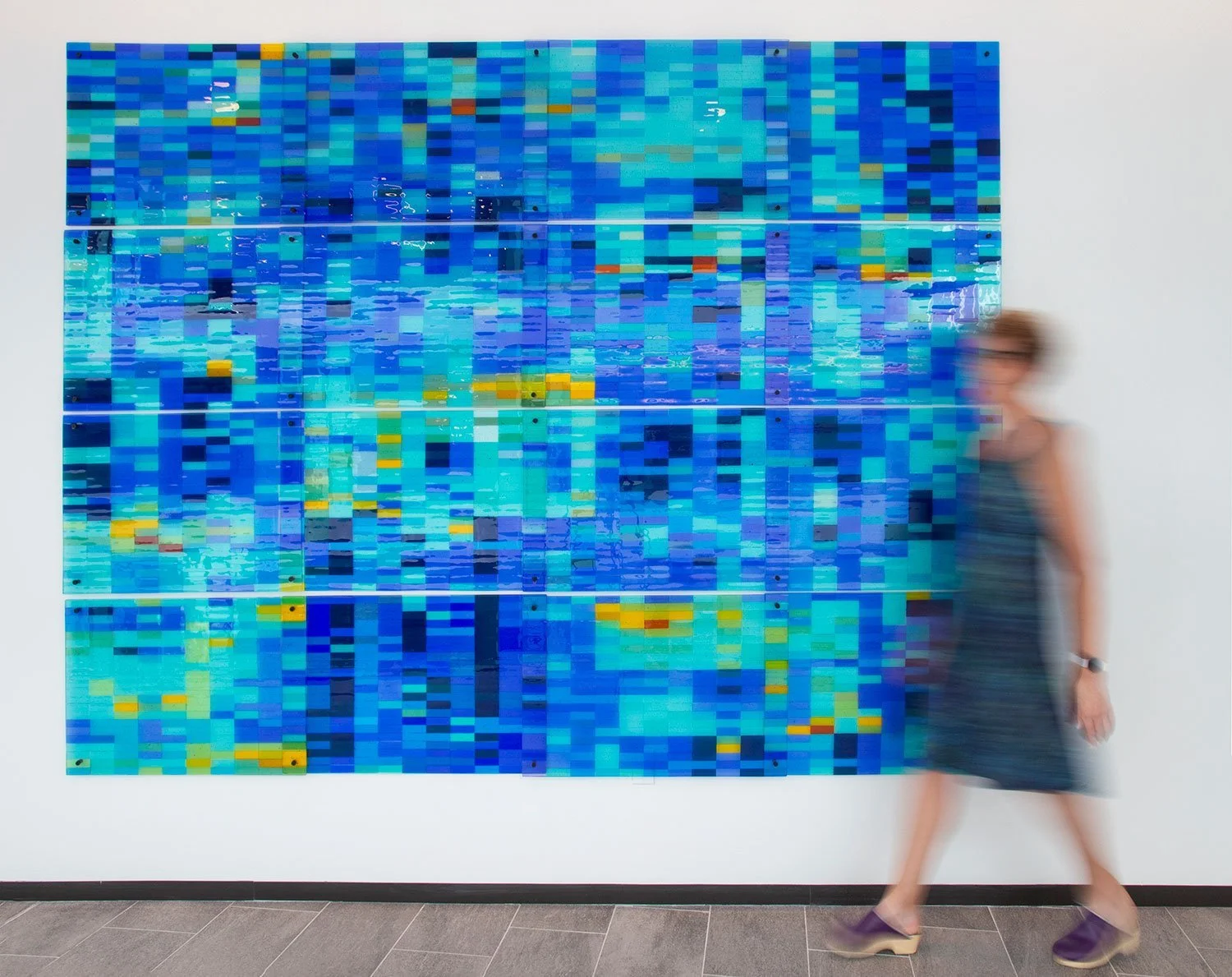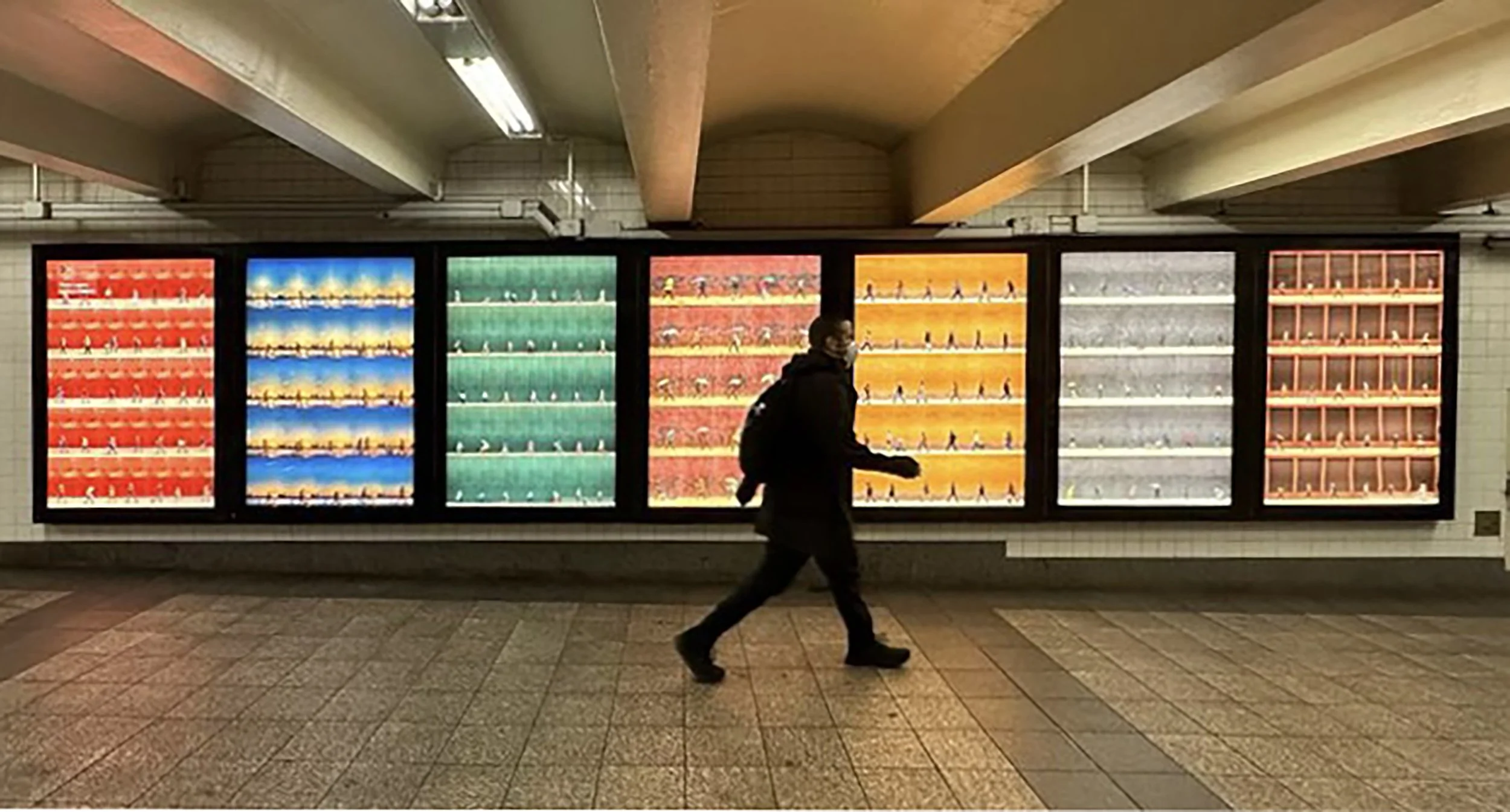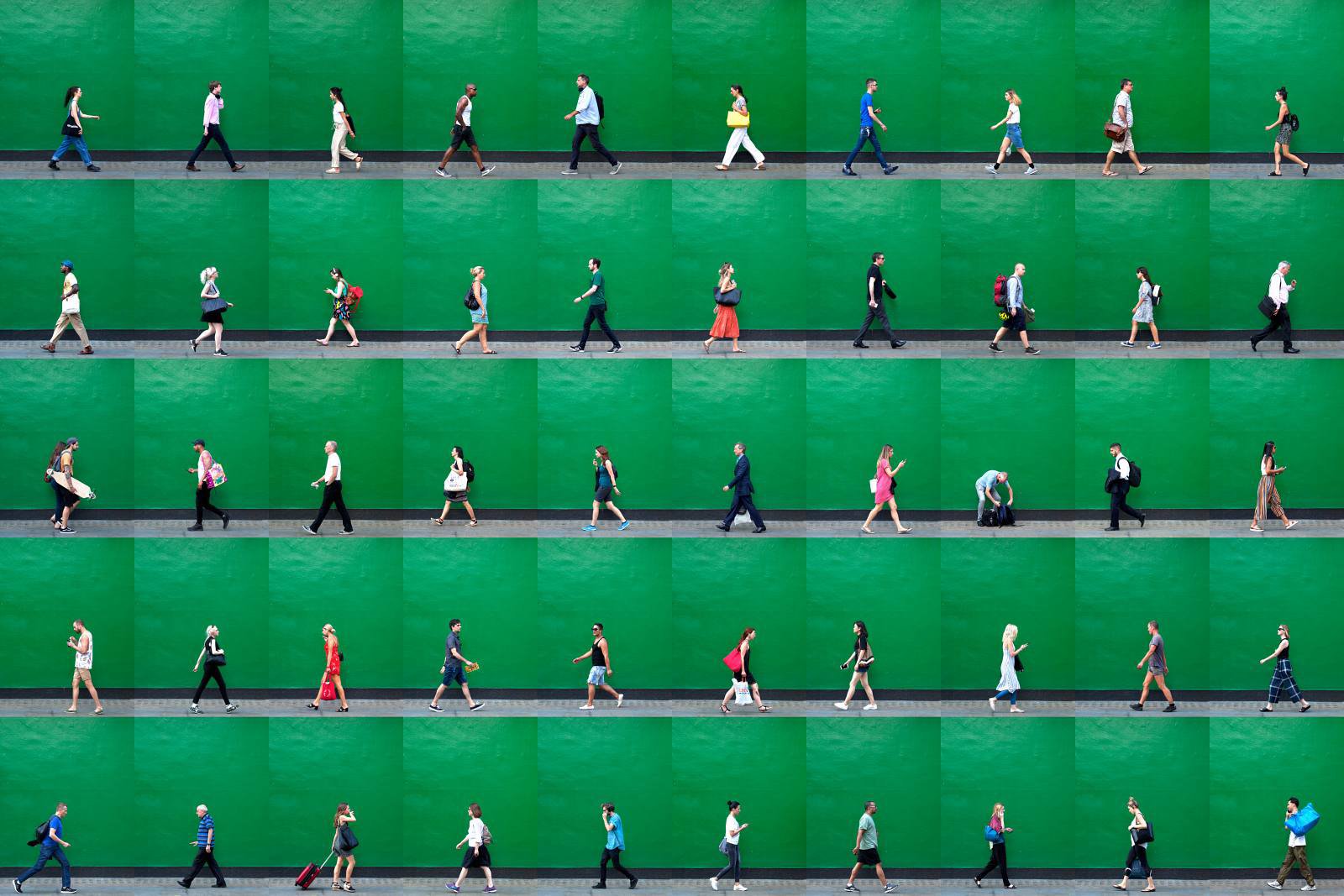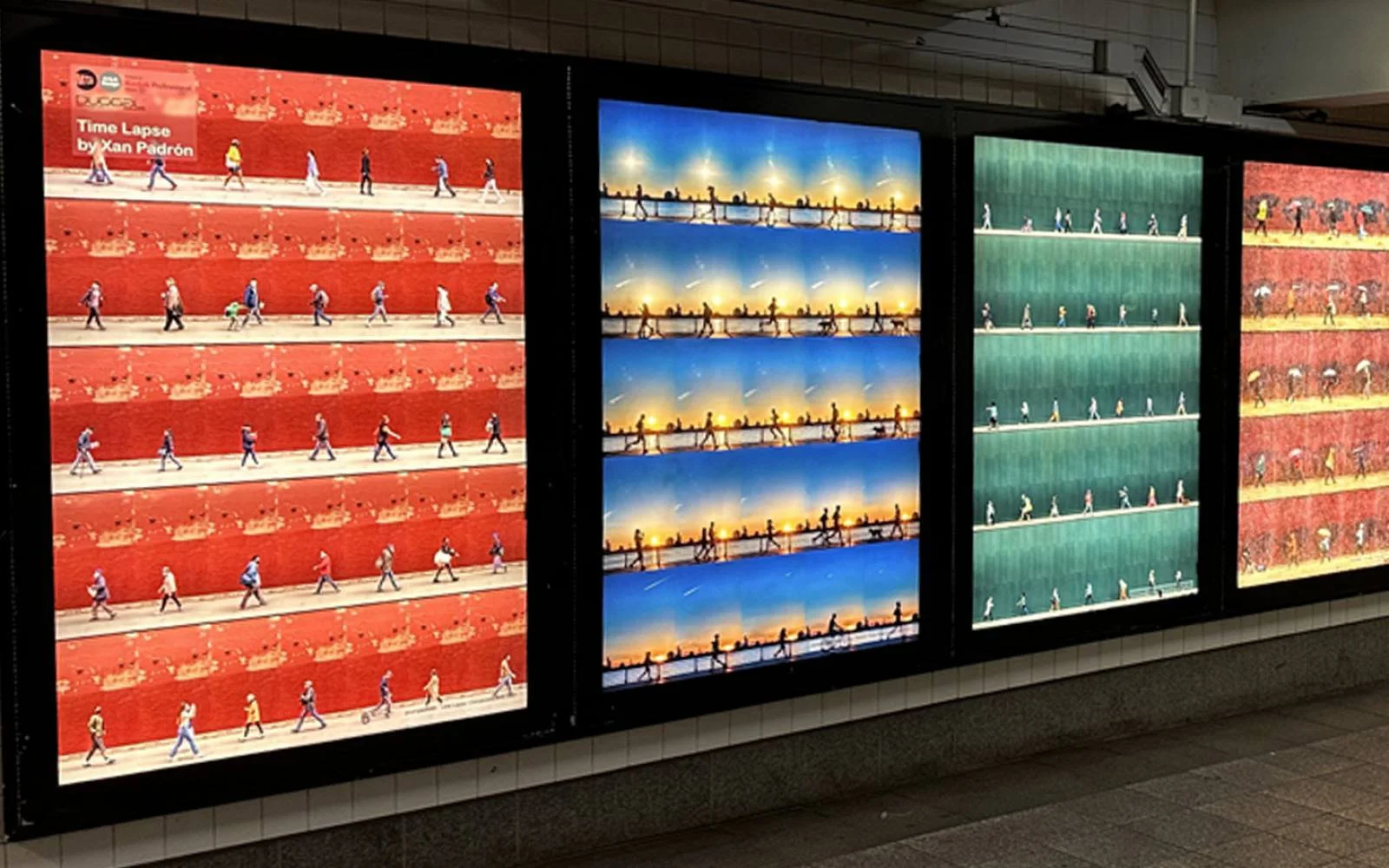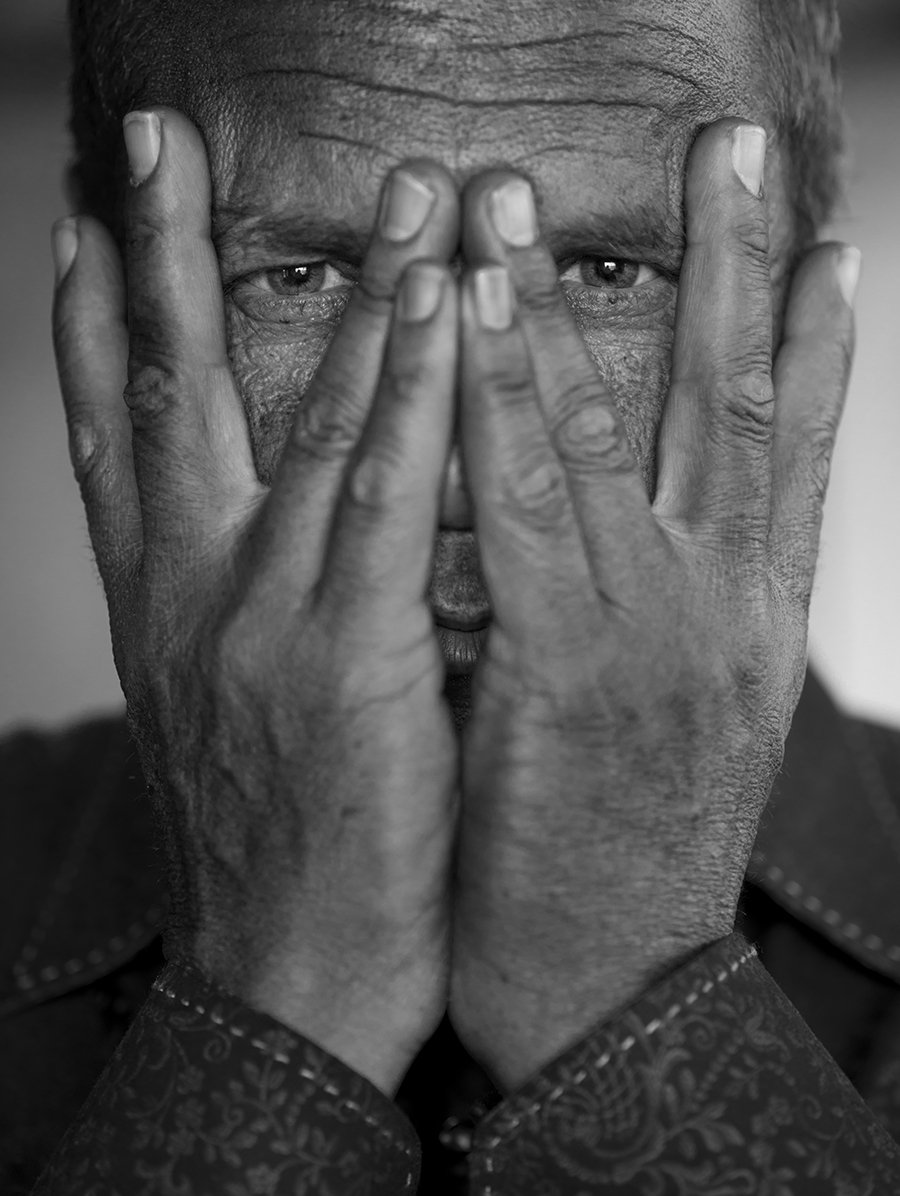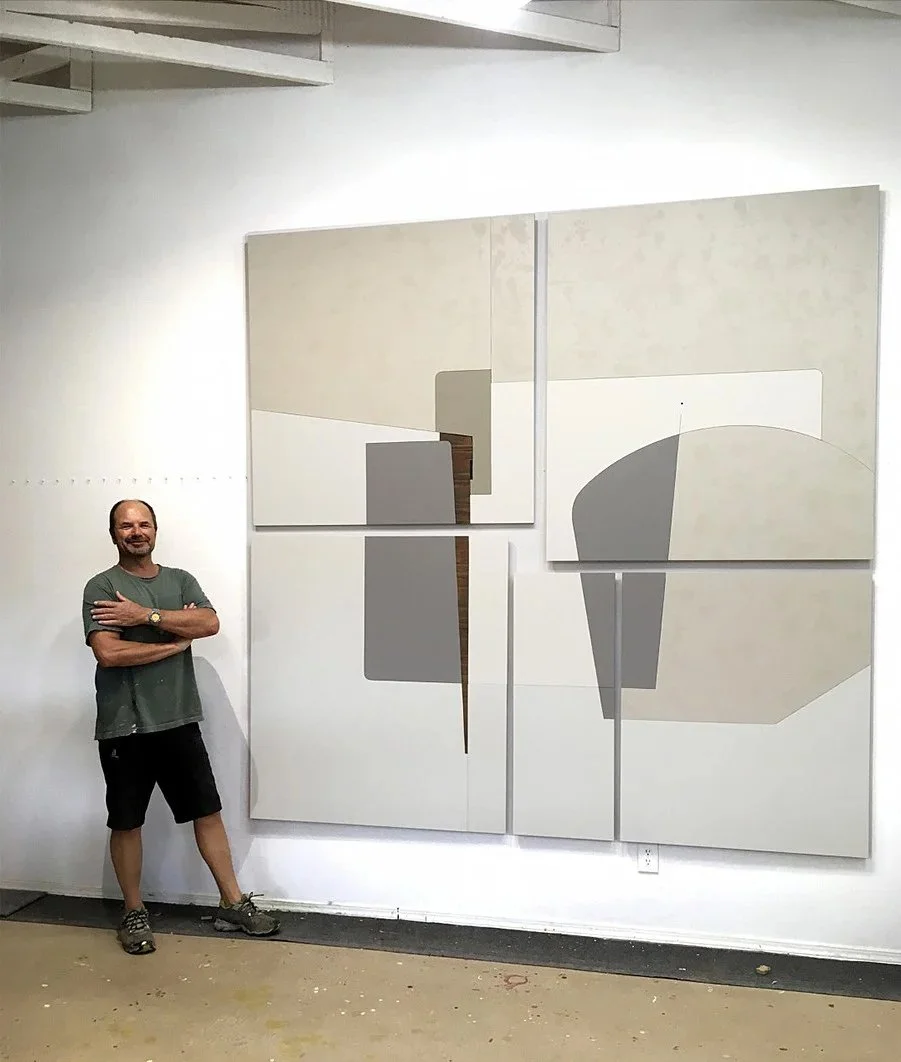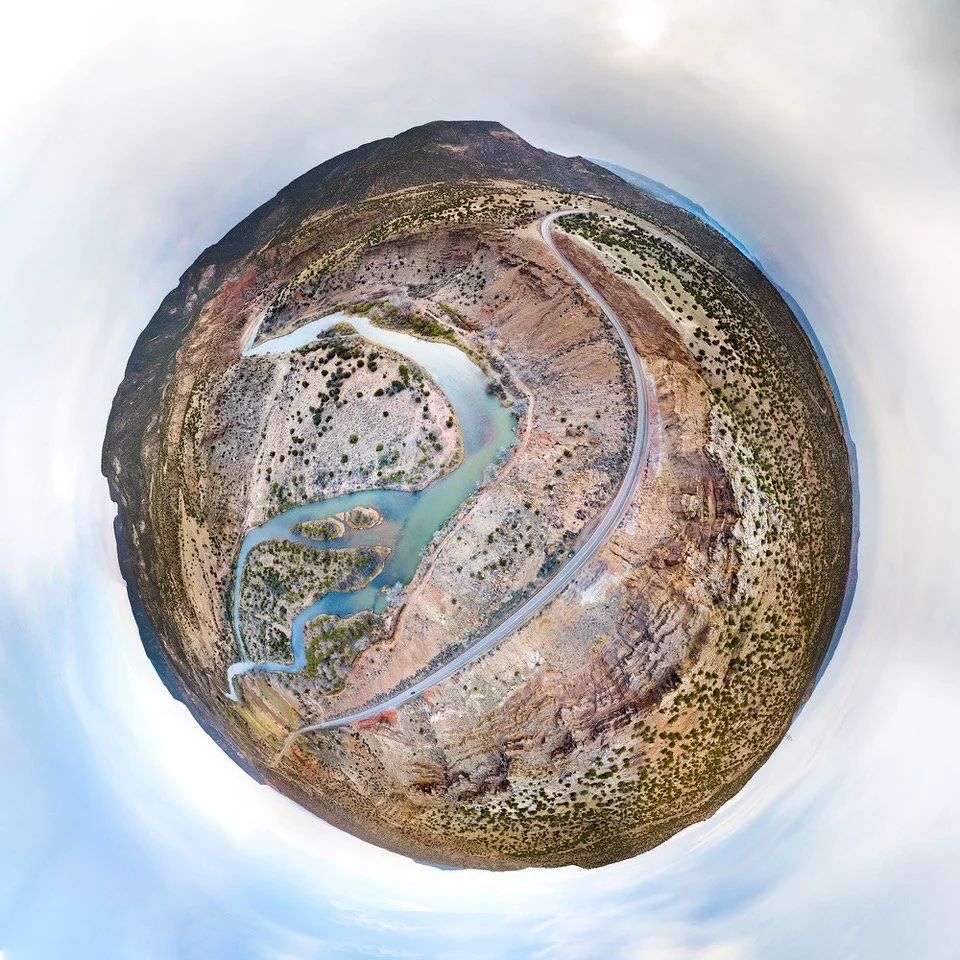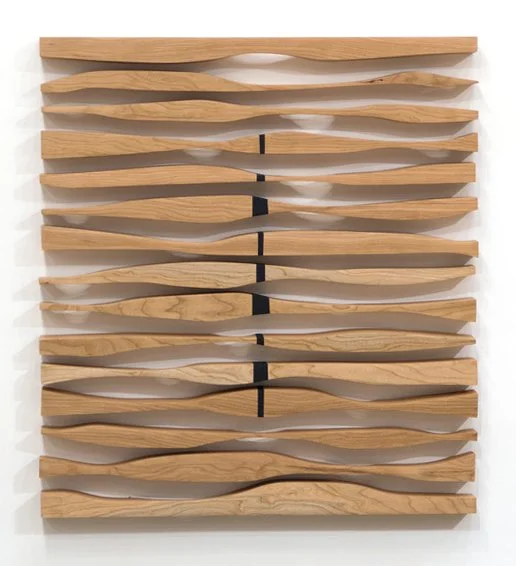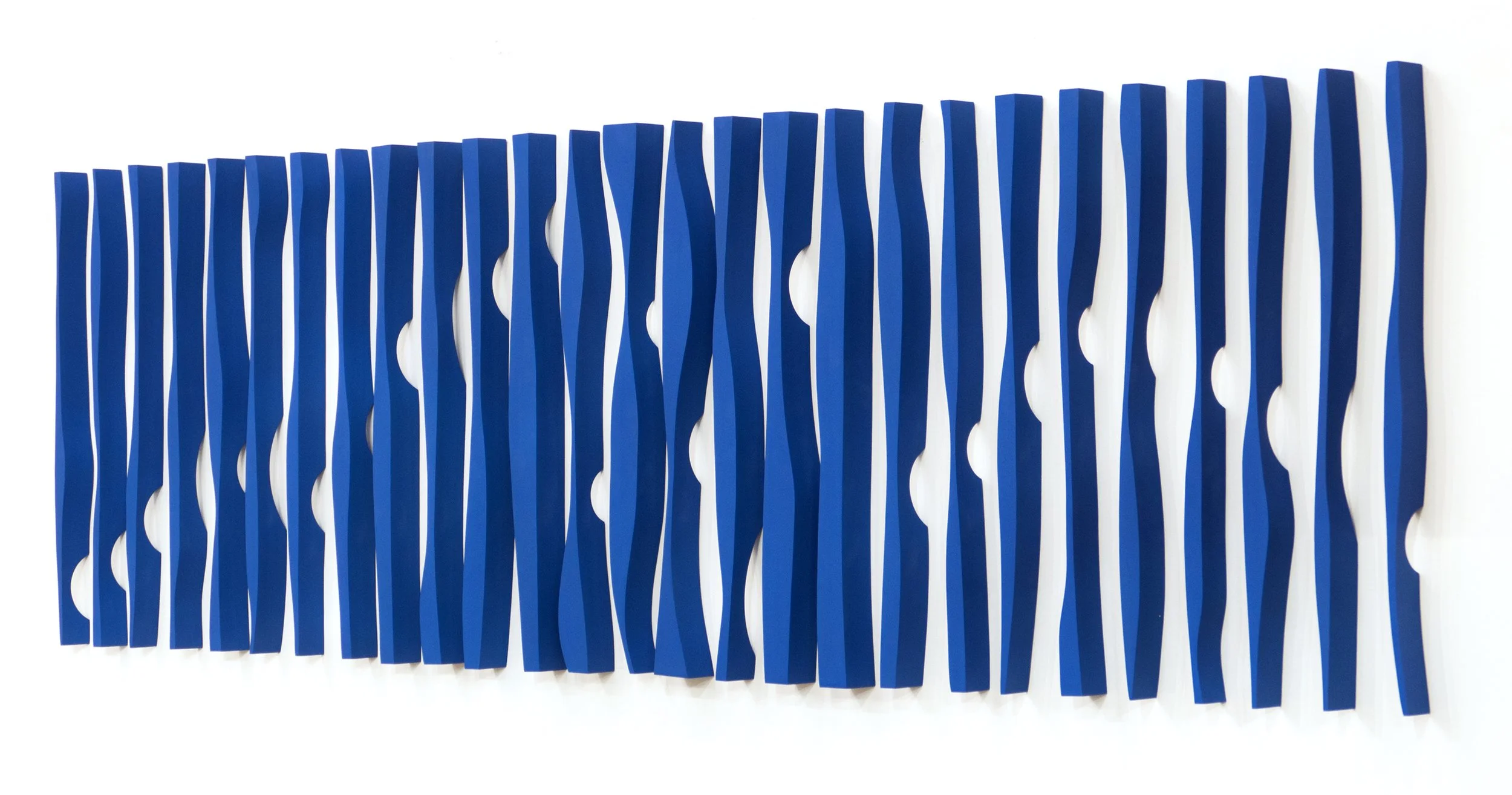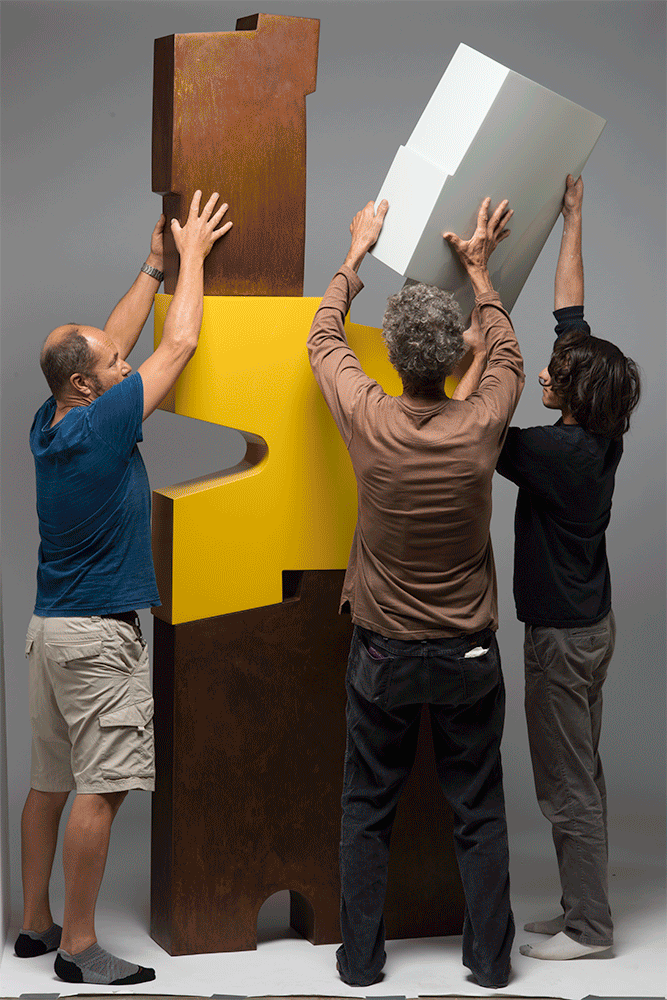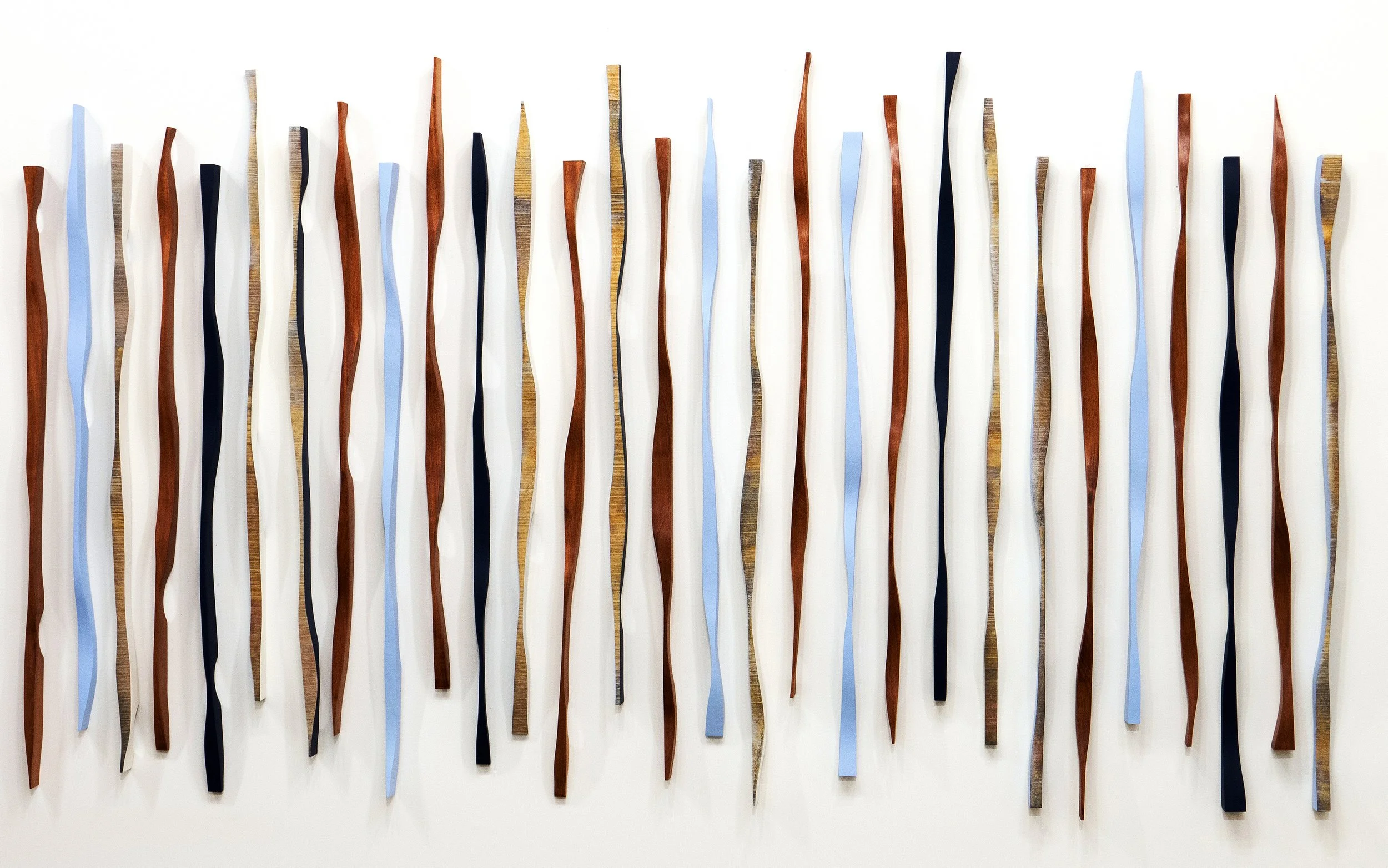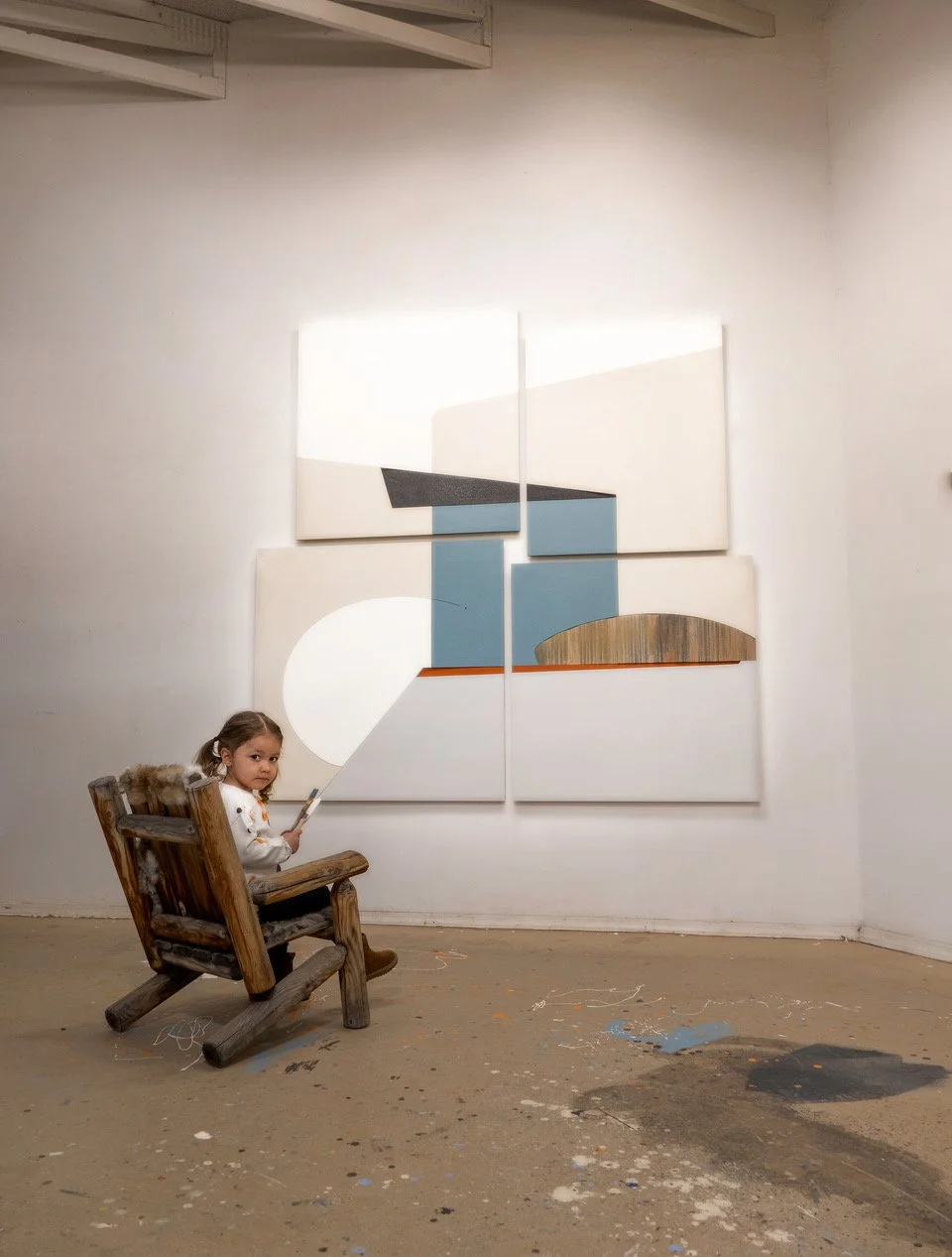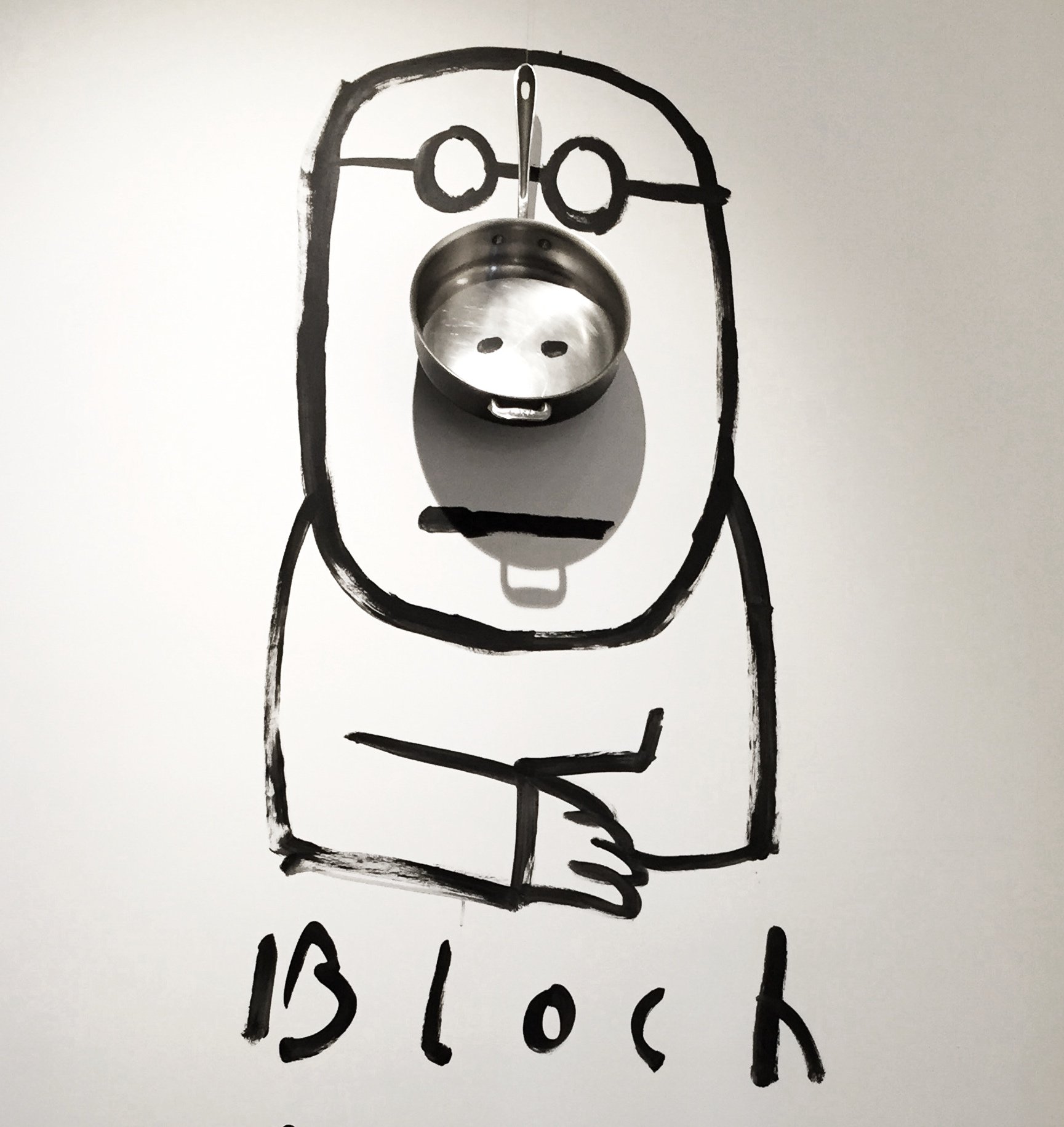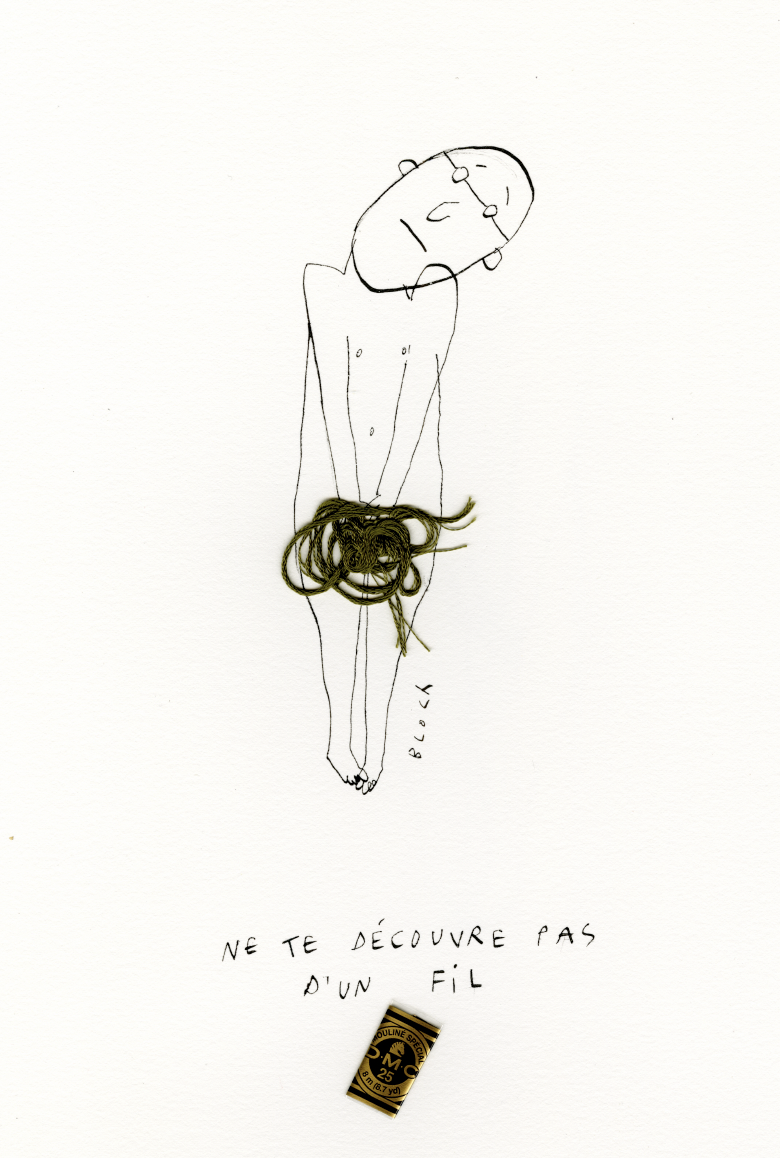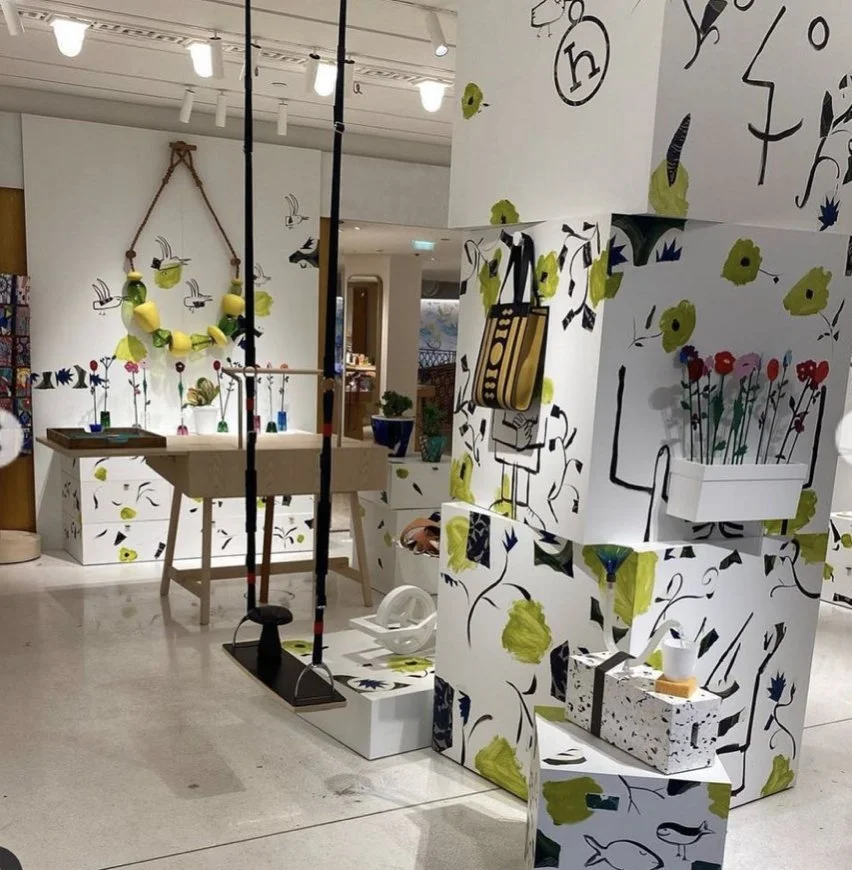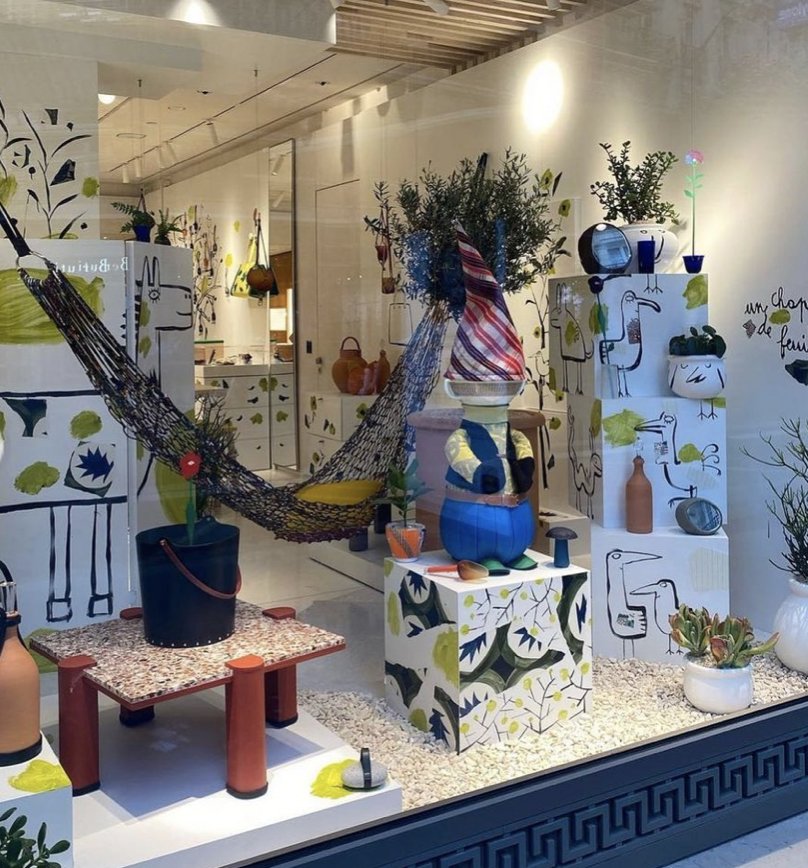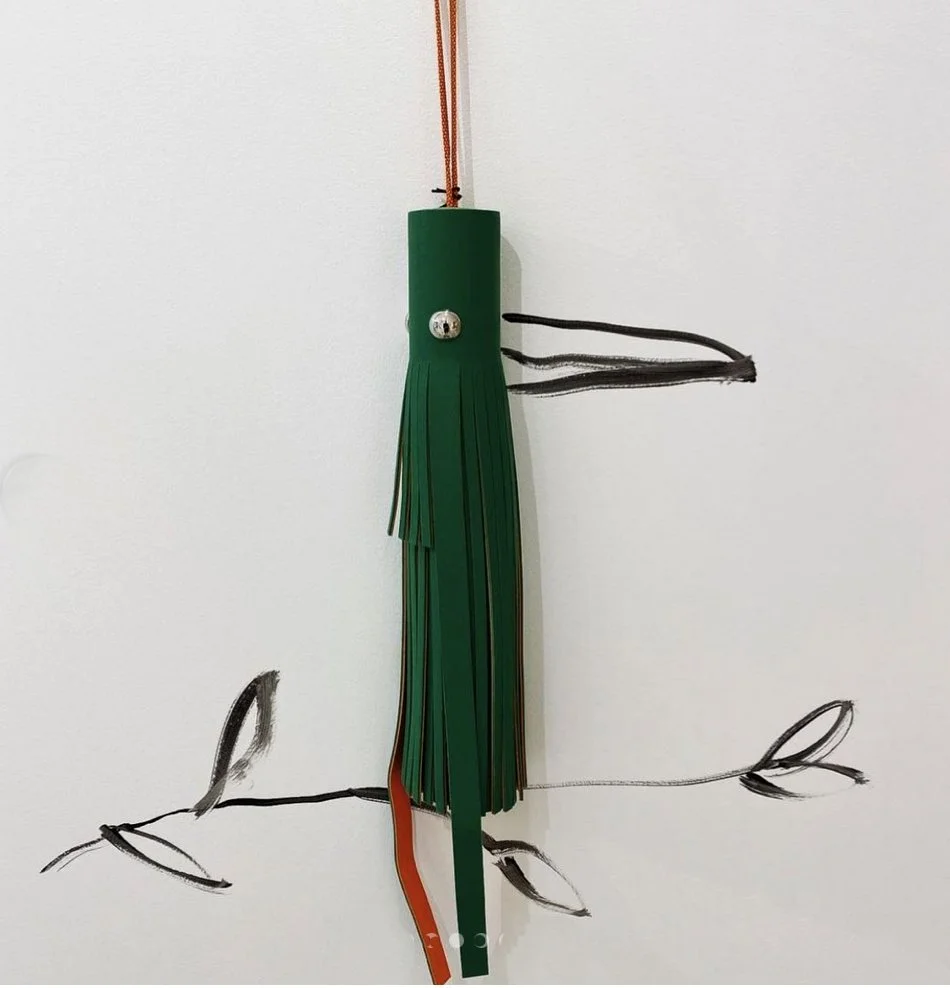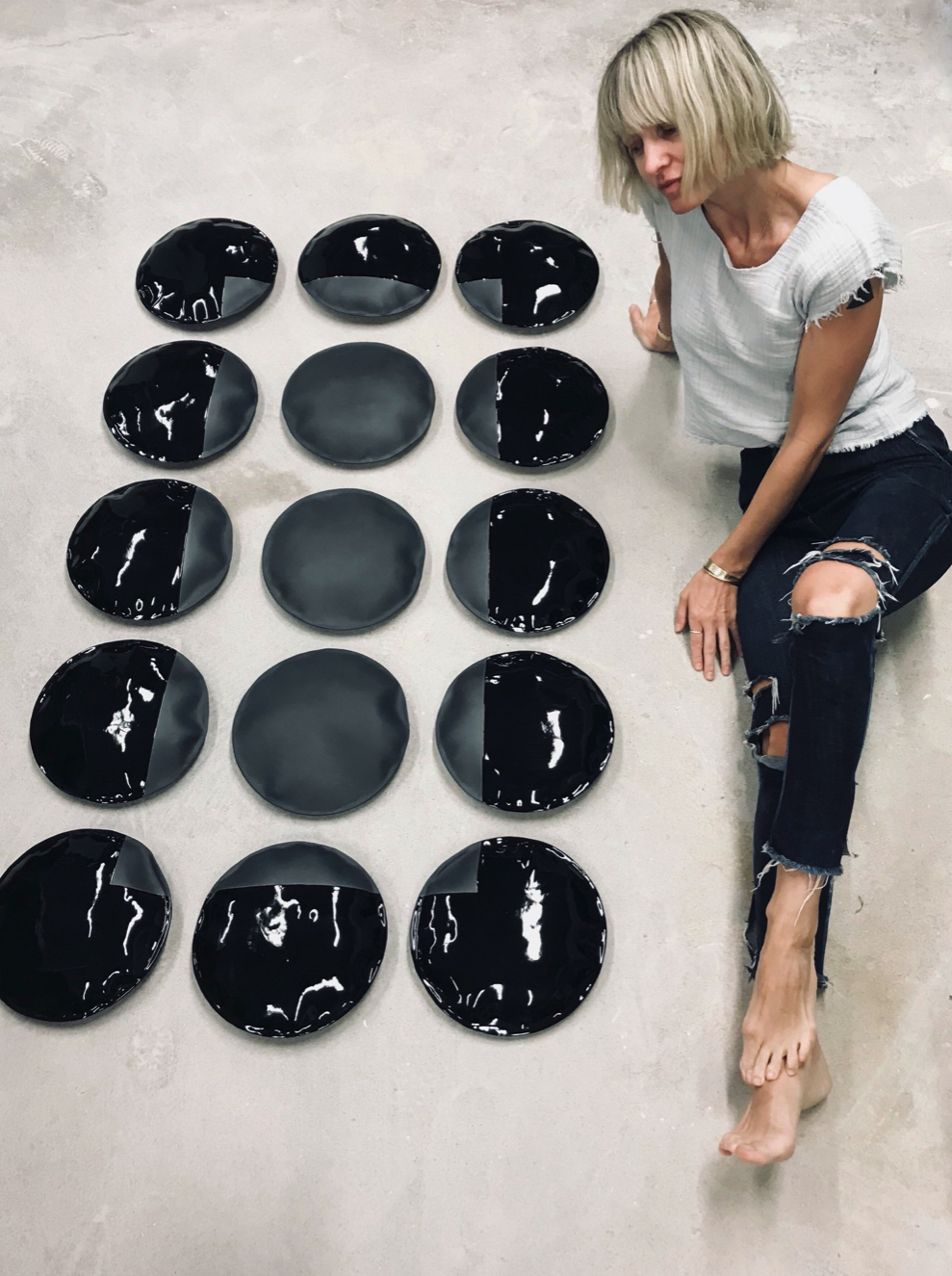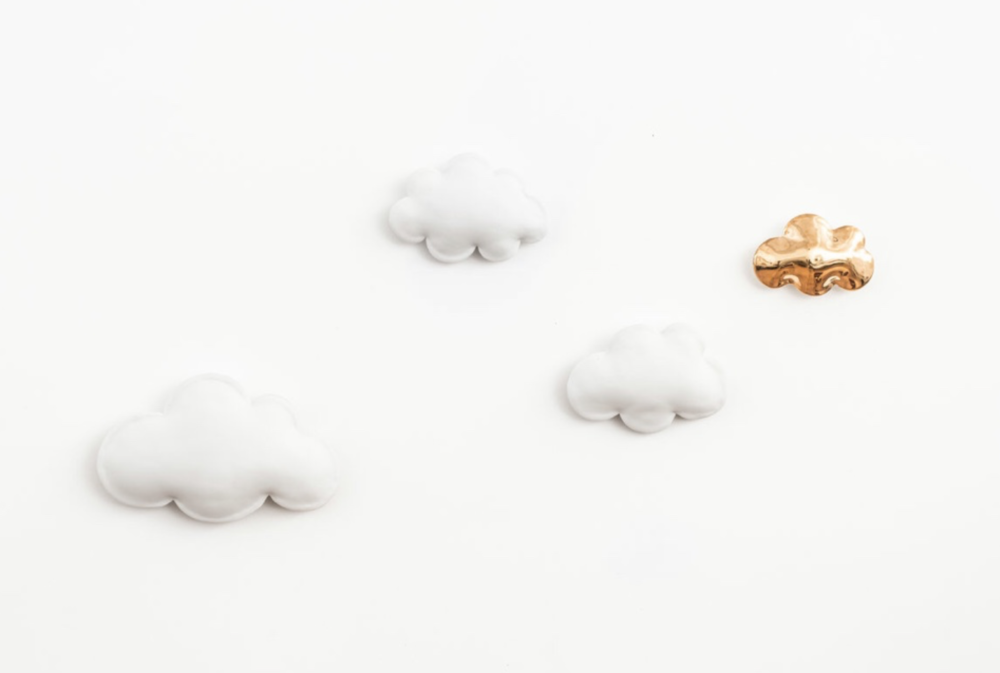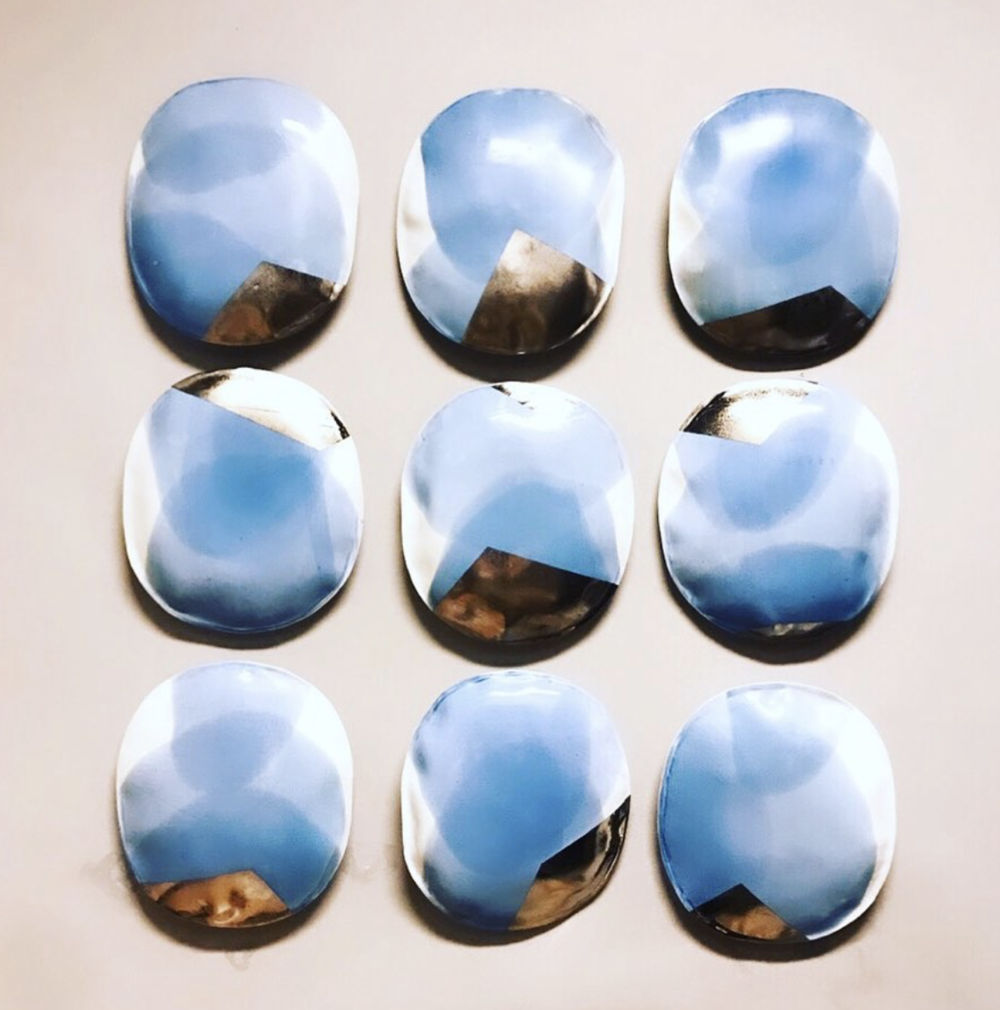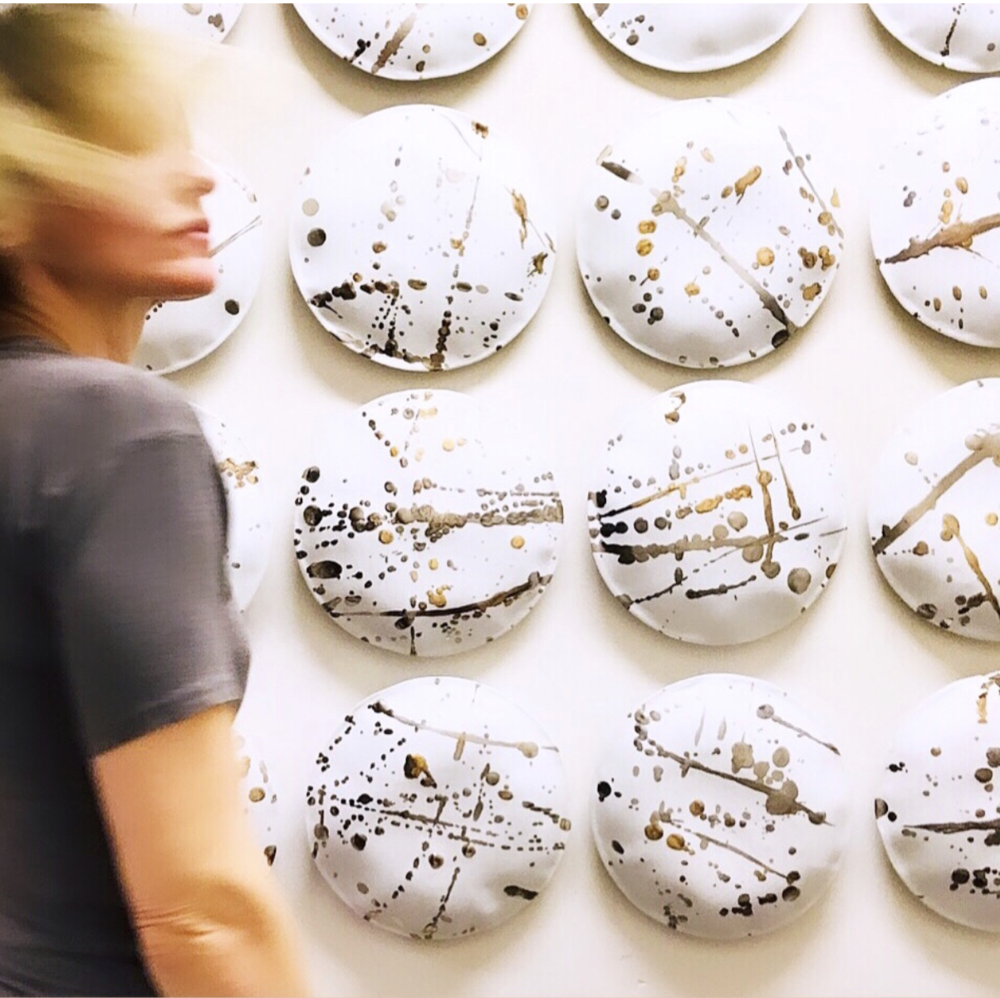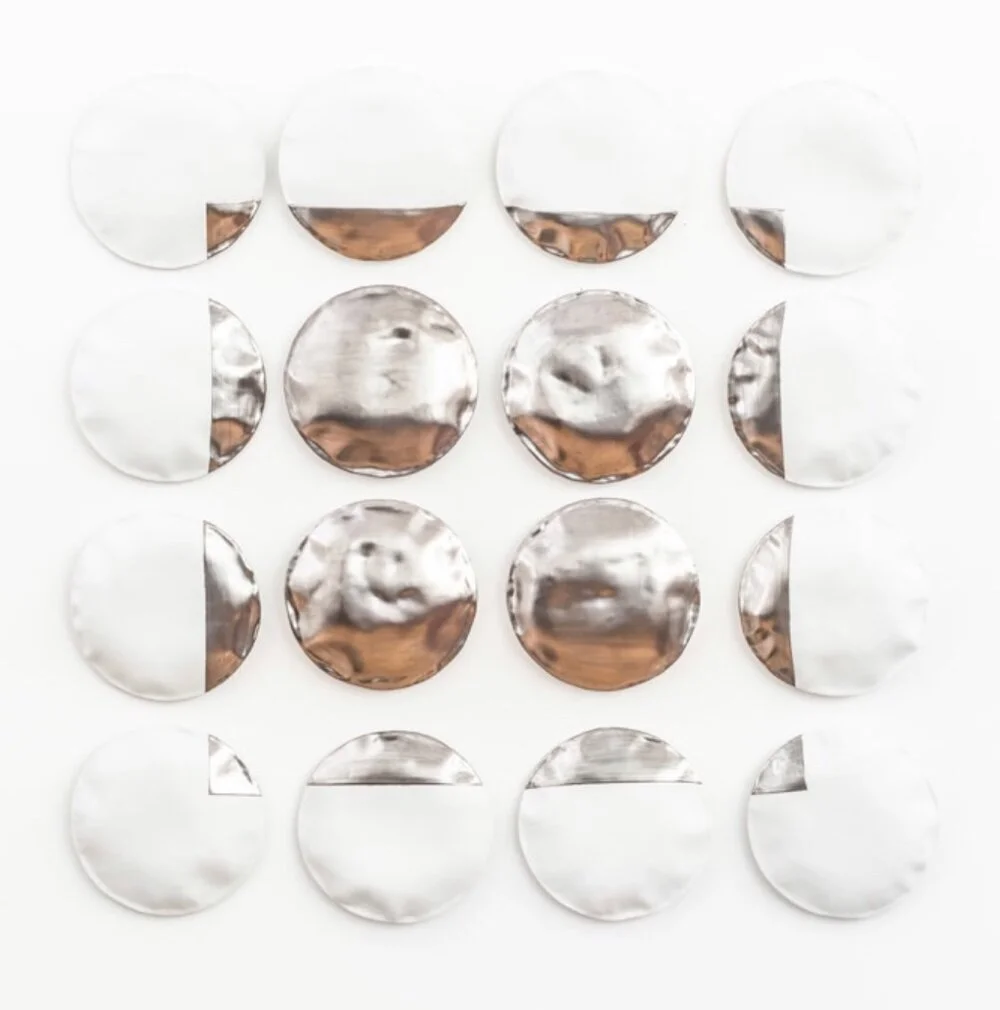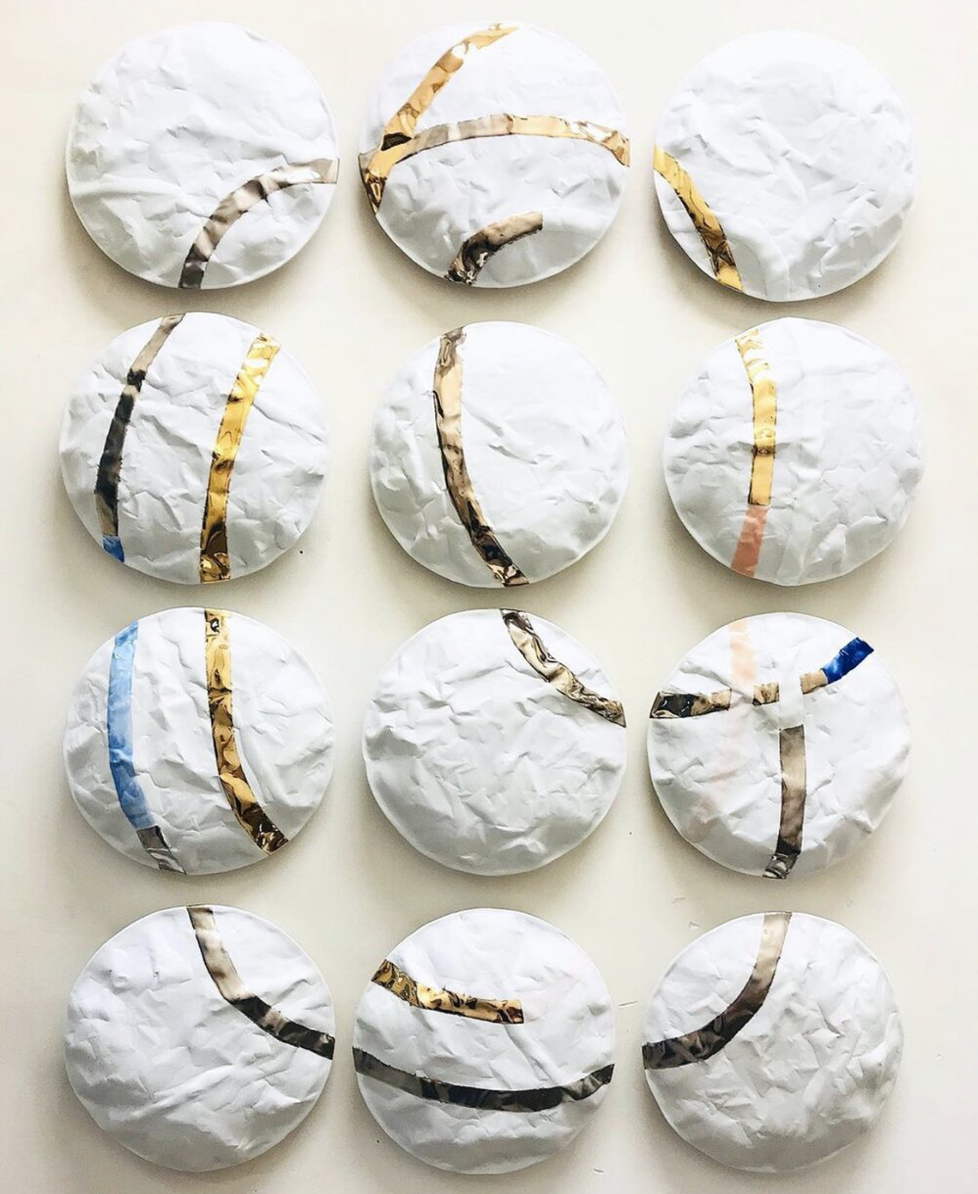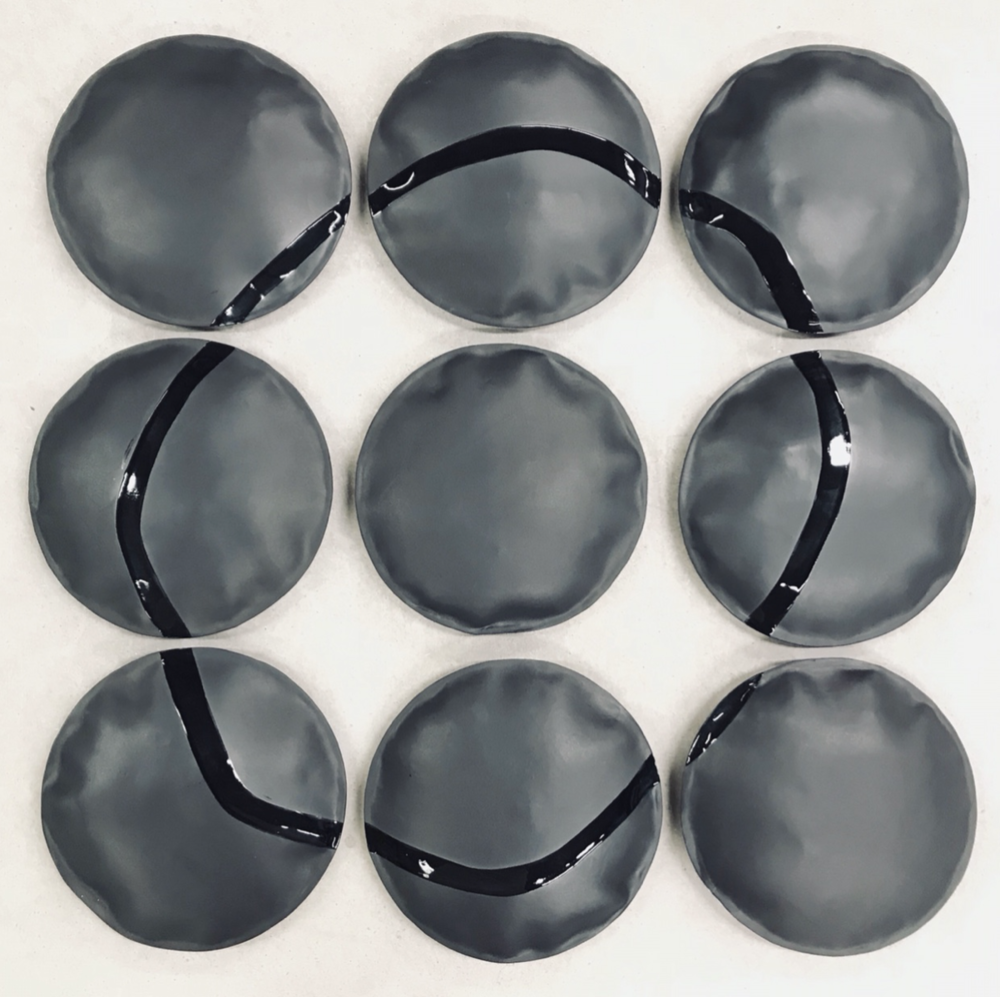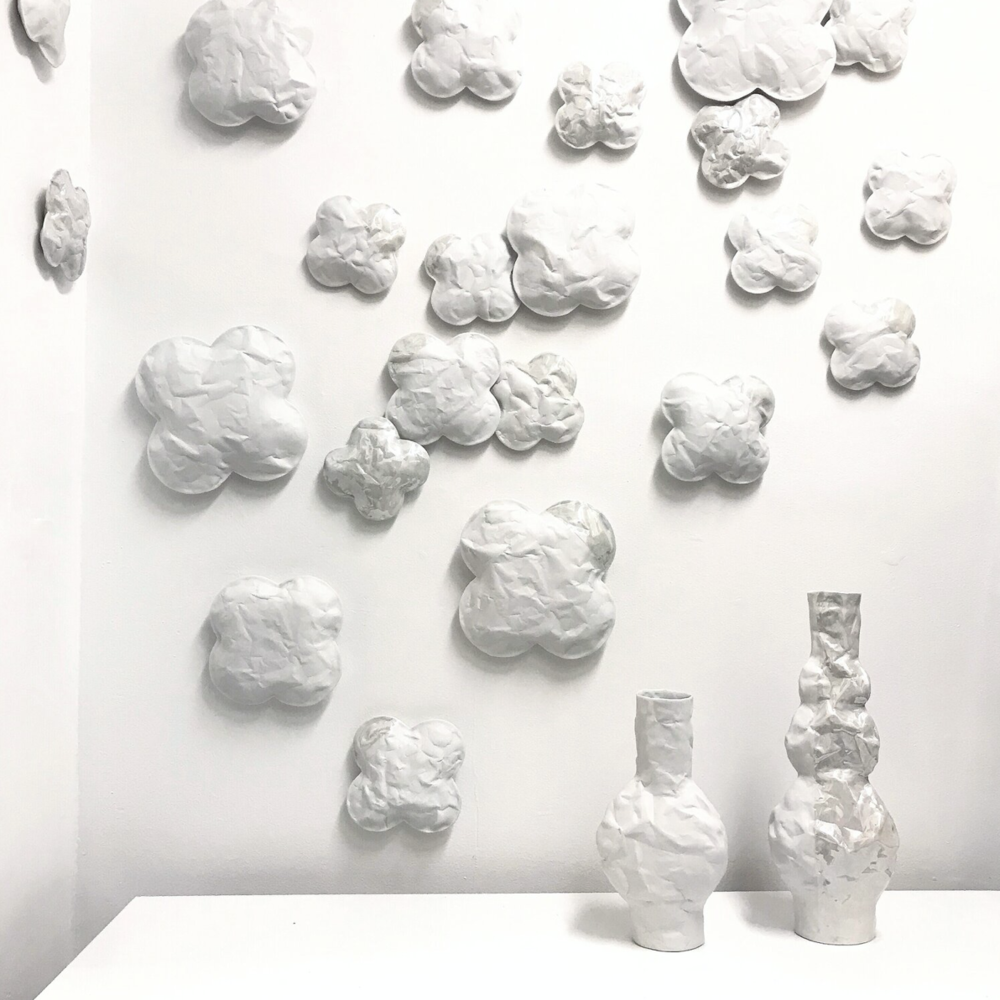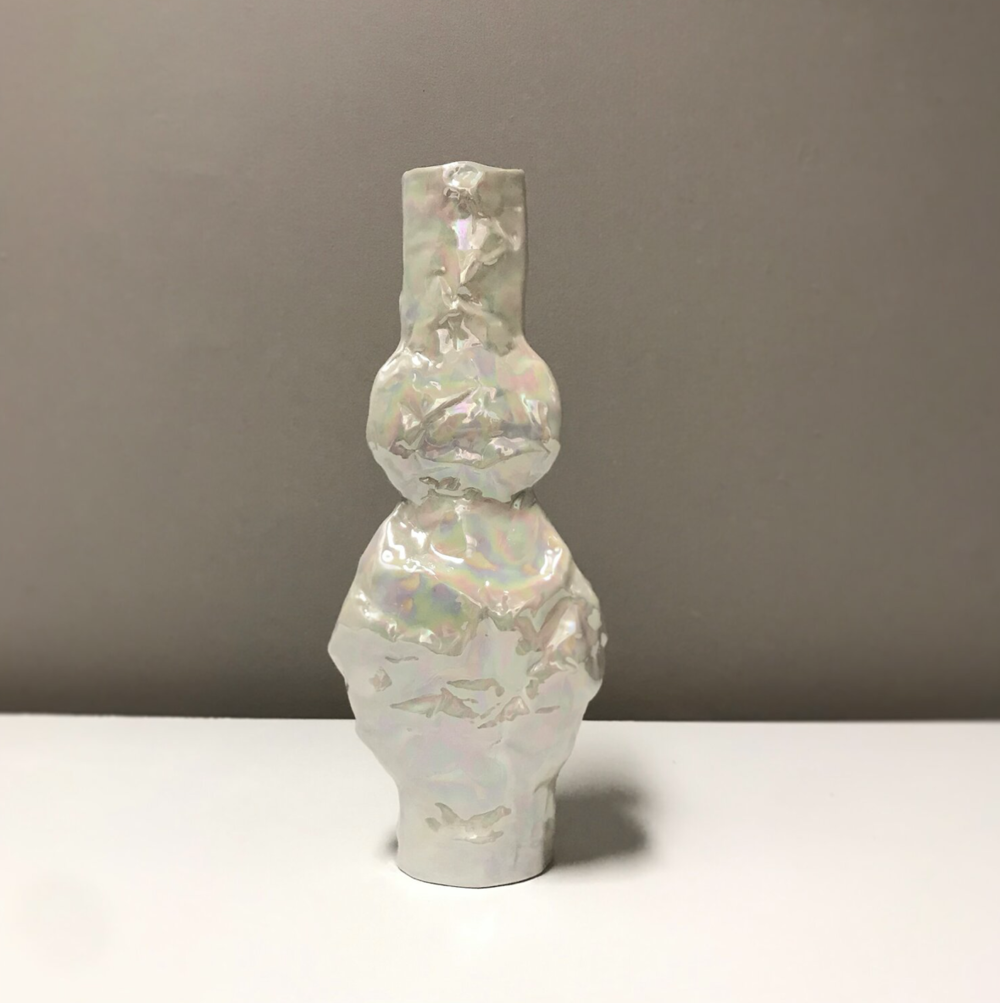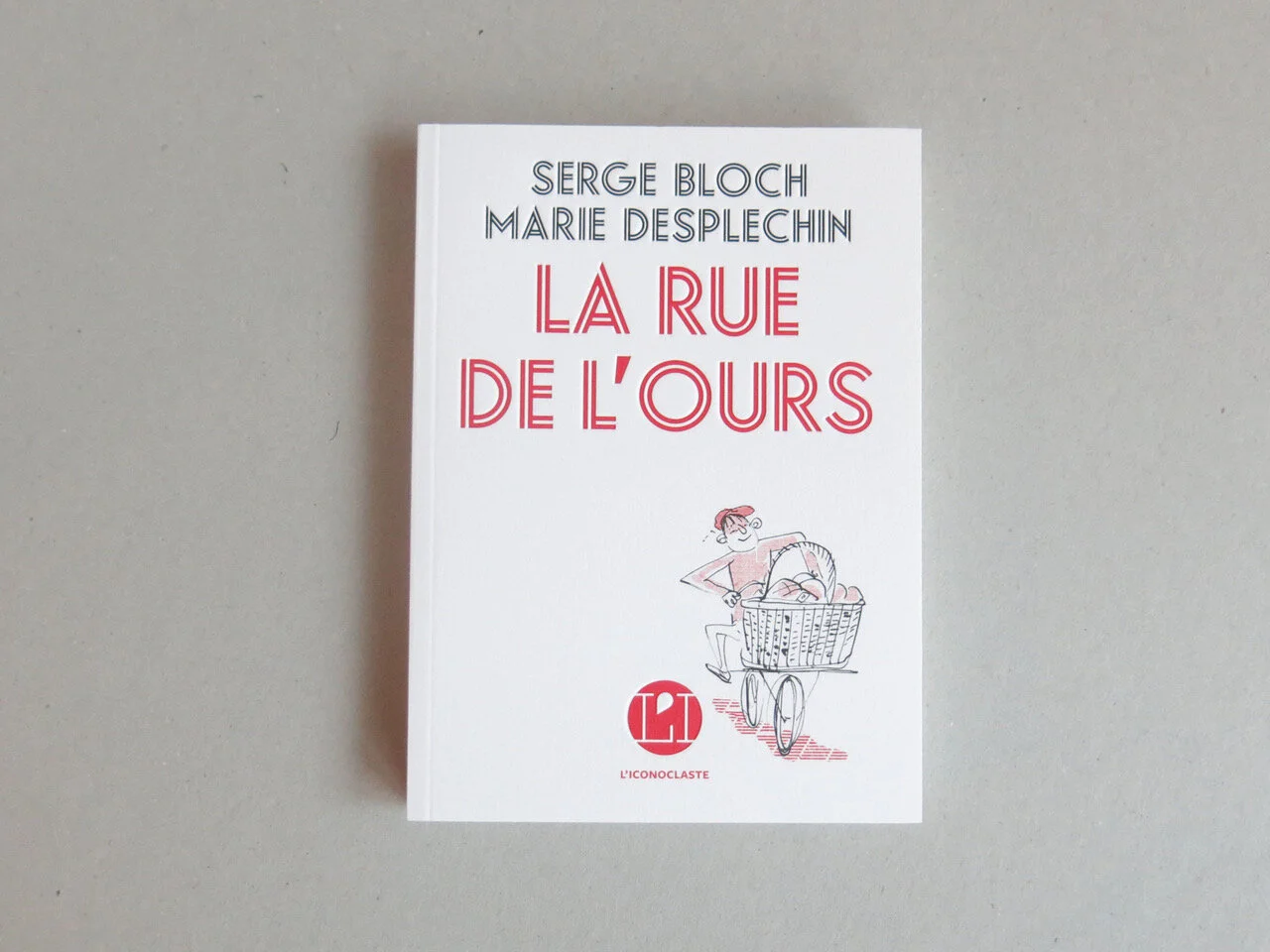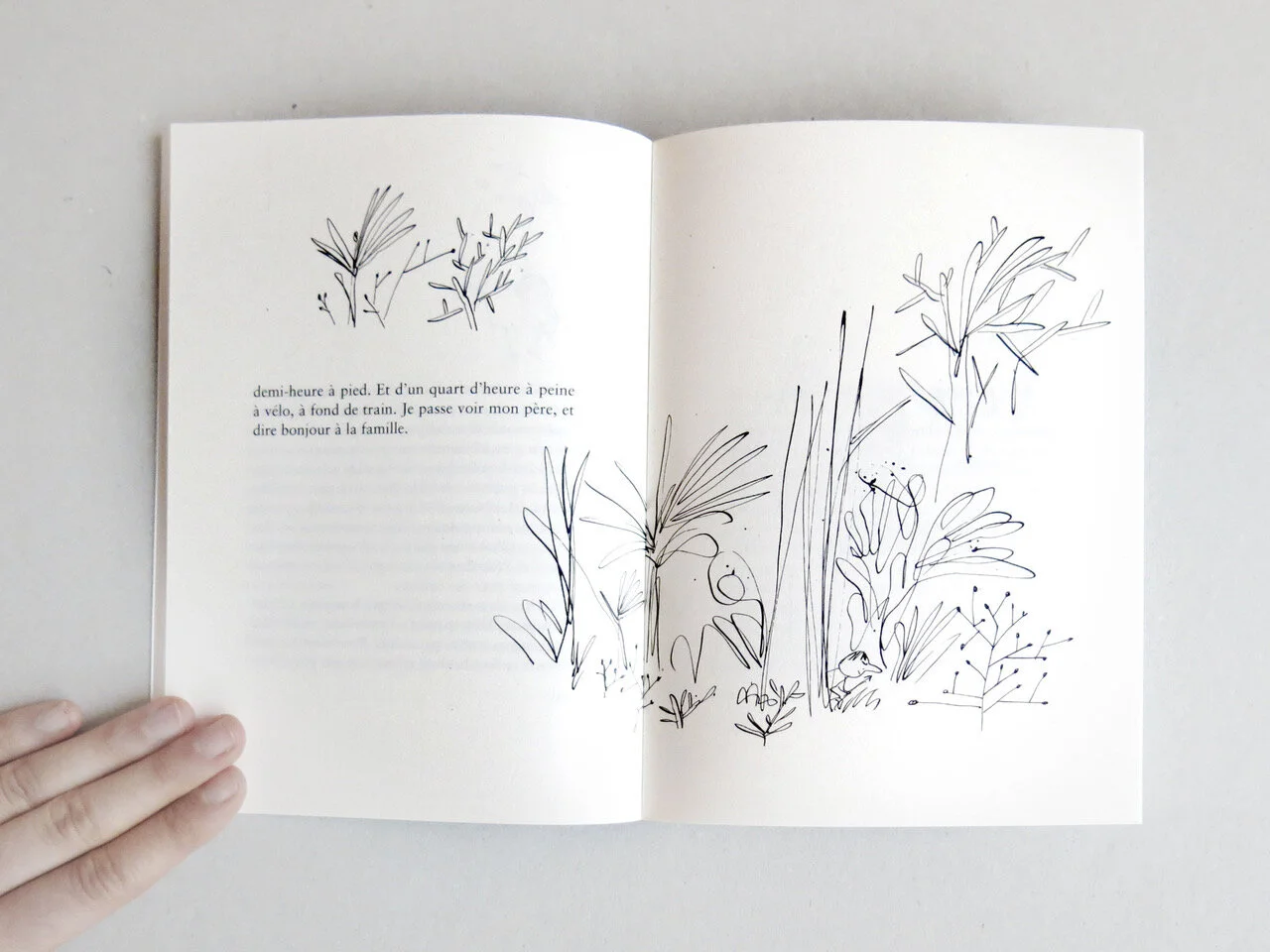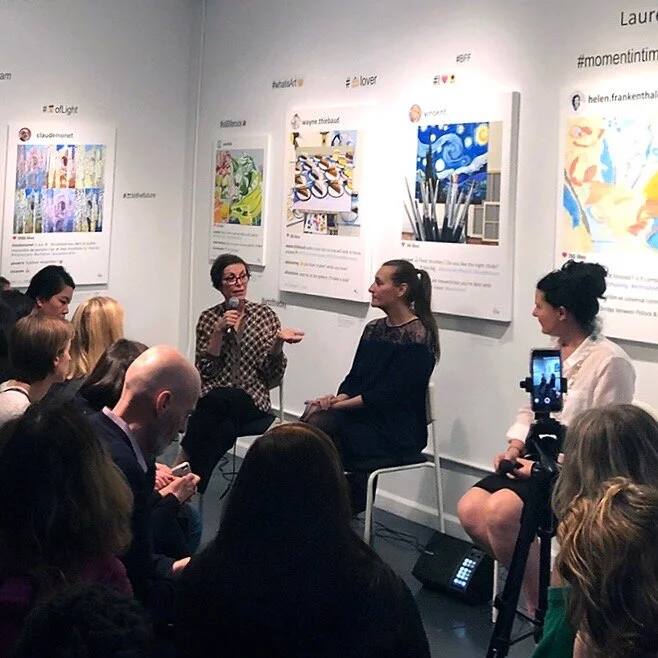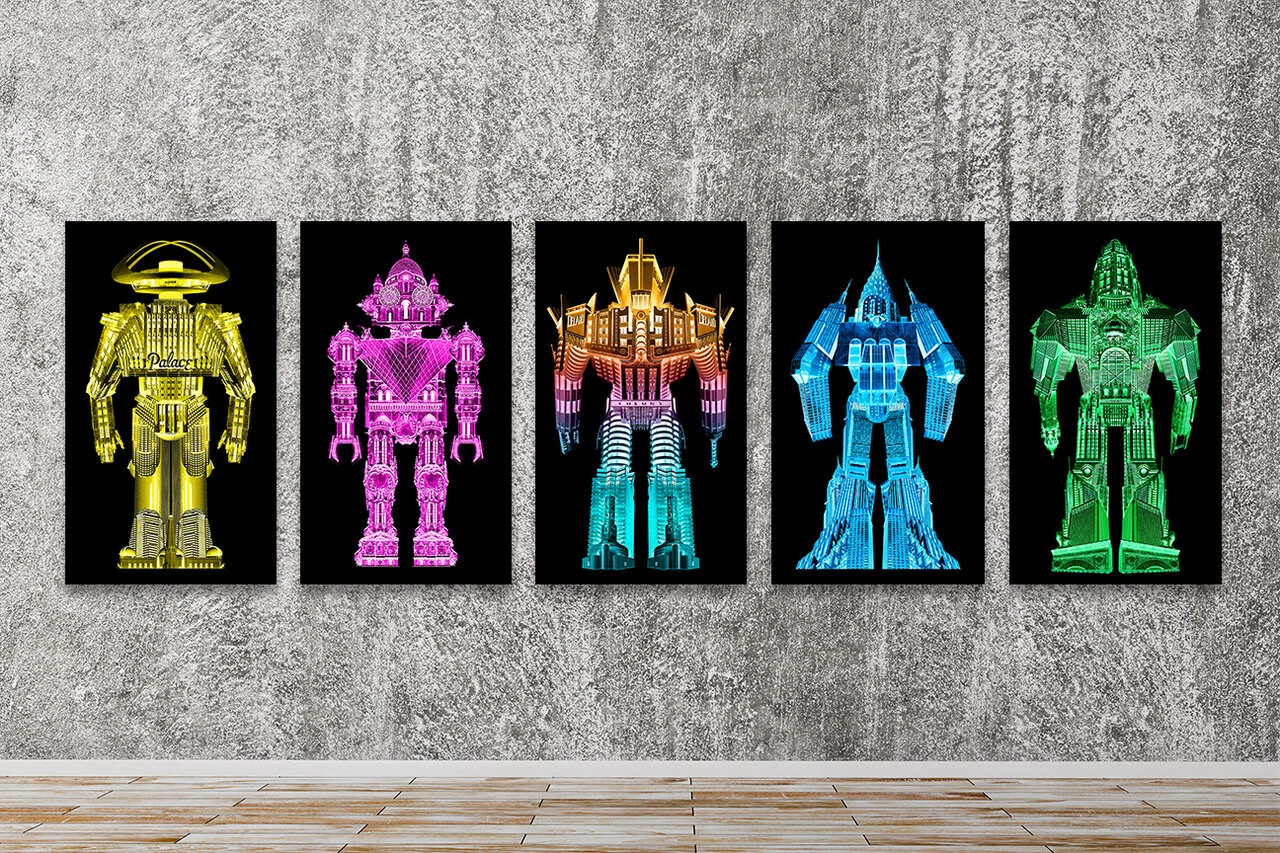In the photographic works of Xan Padrón, urban walking is no longer just an ordinary city practice; it takes on different meanings depending on whether it is done in the rain, under the sun, in familiar terrain, in urgency and quick movement, in the middle of a conversation, by the seaside, or in front of a green wall. By choosing a fixed background in the heart of one of the many cities he has explored, this renowned street photographer of Spanish origin, based in New York, perpetuates anthropologists' interest in walking, which engages not only the body but also a state of mind and a perception of the city. To do this, he offers us a series called Time Lapse, through which he artistically and humorously details unique pedestrian experiences. The title of his exhibition immediately reveals how the artist combines his love of movement and rhythm—he is also a musician—with artistic techniques. Literally, Time Lapse is a technique that reveals actions and movements that are difficult to observe at real speed. Pedestrian movements in urban environments are thus a favorable exploration ground for this technique. It took Xan Padrón's discreet eye and compositions to give meaning to this urban fact, capturing, as Marcel Mauss would say, the full-body movements when it is not at rest. Mauss was the first to talk about walking as an acquired and learned act. Here, let's outline the main assets of this photographic work for an anthropologist, but also for all exhibition visitors who will no longer see walking as a simple natural fact devoid of context but rather as a social fact of urban mobility.
Read MoreA gallery talk with Samuel Bloch
Discover the rising new generation, the perfect artist to collect today.
Samuel Bloch paints canvases on the frontier of abstraction that give free rein to the imagination.
He studied graphic design at the London College of Communication and graduated in 2017. Since then he has discovered painting and now devotes most of his time to exploring this technique.
The Studio. (2023), 51 x 59" (130 x150cm), acrylic on canvas. $5,900
Michele Mariaud Gallery: Your work is very prolific and varied, what are your sources of inspiration?
Samuel Bloch: When I started painting, I was drawn to painters who were very expressive in their gestures, like de Kooning for example. So it was the gesture that interested me most in painting, because originally I did a lot of drawing and I wanted to project my work onto larger formats, adding color as well. What I really liked when I was drawing was the freedom, almost going towards abstraction. Then I became very interested in 20th-century expressionism, with painters like Munch for example who influenced me a lot, or like Kirchner. And finally, beyond the movements, it's individual artists, through different periods, with varied styles that inspire me, like Philip Guston, a painter of the New York School.
Playground (2022), 51 x 59" (130 x150cm), oil paint on canvas, $5,900
MM: Moving towards abstraction... and yet there always remains a figurative aspect in your works, there are always characters, even if they are imaginary characters...
Samuel Bloch: Yes, it's a bit paradoxical. Generally, I draw inspiration from reality, from photos or things I observe. I start with drawing, then move on to painting. I prefer starting from these types of materials because it also allows me to free my mind a bit, and in the end, it's often more fluid. Even if it's imaginary, I like to keep the figurative aspect. It helps to better connect with the artwork. In fact, I usually can't create completely abstract things.
The Imaginary Museum (2023), Diptych, 63 X 110" (170 x 280cm), oil on canvas, $6,300
MM: Drawing remains your foundation for capturing the moment, isn’t it?
Samuel Bloch: Yes, because I often work quickly, it's a way to have something instantaneous before starting to work longer on a large format. It also helps to lay down foundations, it helps me to structure even if I'm not trying to create something very realistic.
3 Sisters, (2024), oil on canvas, 59 x 51” (150 x 130cm), $5,900
MM: In your work, different series and techniques appear—large oil paintings, monotypes on paper or canvas, etc. Is this temporal or do you work on multiple projects simultaneously? Samuel Bloch: It's clearly in phases, not really linear. Sometimes I return to certain things I've done in the past. I like to explore different ways of painting. It's the subjects that change, rather than my way of painting, although that evolves too.
UNTITLED VII (2022). Monotype, 25.6 X 19.7” (65 x 50cm), ink and oil on paper, $950
MM: You use the Monotype technique a lot, could you explain how? Samuel Bloch: Monotype is a single impression print, where a surface is inked and then transferred by hand directly onto paper or canvas; there's no engraving involved. This allows for an original with a unique texture, one that you don't get with traditional printmaking—it also brings a bit of unpredictability, which is part of its appeal. I use this technique in a different way, leaning more towards painting than drawing. For portraits, for example, I apply my paint directly onto the plate and then press it for printing, using oil paint because acrylic dries too quickly.
SELF PORTRAIT (2022). Monotype, 29.5 X 23.5”, (75 x 60cm), ink and oil on paper, $950
MM: And for your latest monotypes on canvas where there's also a fantastical aspect?
Samuel Bloch: It's the same technique on raw cotton canvas, but then I work over it with oil paint. For this series, I started with photographs of sculptures from all periods, all civilizations, and I liked extracting expressions that I found in these photos, to then integrate them into truly surreal paintings.
Wonderland (2023) Monotype, oil on canvas, (20 x 28”, (70 x 50cm). $1,100.
MM: What are you working on at the moment?
Samuel Bloch: I'm doing intaglio printmaking for the first time on plexiglass using drypoint, and I'm also starting on metal. Additionally, I'm sculpting with clay, creating a series of small-scale oil portraits. I'm using the sculptures specifically to create 3D animations—I'm doing research to animate them.
MM: Do you enjoy constantly exploring?
Samuel Bloch: I try to build more precisely the "source materials," which I actually use as a basis of inspiration for painting. Right now, I'm also taking a lot of analog photos to collect images and have a database. And I continue to draw a lot; I go outside, I draw—that's always been the case!
A gallery talk with Ysabel Lemay
Ysabel Lemay is a Canadian artist and photographer known for her intricate, large-scale photographic collages that depict natural landscapes and wildlife. Her work combines multiple photographs of individual elements, such as flowers, trees, and animals, to create a single, seamless image that invites the viewer to explore the details of the natural world.
Interview by Isabelle Chabrat for Michele Mariaud.
Ysabel Lemay was born in Quebec, Canada, in 1966, and currently lives and works in Austin, Texas. She began her career as a painter before transitioning to photography, and she draws inspiration from a range of sources, including the natural world, art history, and her own dreams and memories.
State Department, Art in Embassy, Taiwan Mural 27 feet X 42 feet (8 x 12m)
A gallery talk with Ysabel Lemay
Michele Mariaud Gallery: What insights did your 15-year tenure in advertising yield in terms of aesthetics and creativity, prompting your transition from the corporate realm to becoming an artist?
Ysabel Lemay: Advertising and, most specifically, graphic design, taught me the rules of visual Feng Shui. I learned how to work with colors and how they can trigger different emotions. I learned that image composition is essential for the viewer to look more attentively at the work in front of them. And, most importantly, my fifteen years in advertising taught me how to market my work so I could leave the advertising industry and produce work that is more meaningful to me.
Your work showcases a profound connection to nature as an endless source of inspiration. How do you nurture and sustain this connection?
I am addicted to the beauty and endless visual resources that nature provides. The calm and introspective energy I find in nature allows me to connect with the creative space within. To nurture this connection I have adopted a nomadic lifestyle, traveling frequently to different parts of the world to collect materials from different ecosystems. Mountains, lakes, oceans, deserts -- all have specific qualities that inspire me.
LIFE III. (2014). 42 x 60”, edition of 7. 59 x 94”, edition of 5
Your artworks often seem to bridge the gap between the natural and spiritual worlds. Could you elaborate on the representations of this enchanted realm within your work?
The subtle spiritual energy in my work is the channel of communication between me and nature’s consciousness. I spent the last 12 years looking deep into the details of mother nature. All things that are created from the living world have a specific pulse, an energetic imprint that connects us all. It is, I believe, a reflection of grace that emanates from nature.
LES NATURALISTES, (2012). 48 x 94" (120 x 240cm). AP 1/3
Your artistic style has been described as "hyper-collages." Could you share insights into your creative process and technique?
My hyper-collages are a fusion of two previous periods in my life -- my years as an advertising designer, during which I developed skills in digital imagery, and then my years exploring the art of painting, during which I mastered my aesthetic sensibilities and came to apply a deeper, more spiritual, approach to visual creativity. My technique may be high-tech, but a key element of my hypercollages requires me to travel the globe on photographic expeditions, accumulating vast reserves of natural images. From these I intuitively extract elements and then assemble them into baroque tableaux intended to venerate the undeniable majesty and generosity of nature. I consider myself to be more of a conduit, a gateway through which my viewers can pass in order to immerse themselves in nature’s mysteries and marvels. I leave it to my audience to decide how they want to engage with my work. For some, they may be pleasant and charming decorations for their lives. Others may experience something deeper, perhaps an insight into the spiritual realm. Ideally, I hope my work offers the viewer a moment of meditative contemplation by which they can more fully comprehend their world and themselves.
SAMSARA. (2022). 40 x 68”, edition of 7. 59 x 100”, edition of 5
What direction do you anticipate for your work in the coming years?
At this time I am exploring the possibility of integrating new mediums to my digital work to give it a fresh new perspective. This year I spent several months in Oaxaca, Mexico where I studied different techniques of weaving, threads and embroidery. I also experimented with natural dyes. The idea of using my hands again to build three-dimensional structures really excites me. So, moving forward, I envision embracing both the digital and the analog word.
SEED PODS: 500 black stained porcelain hand-cast pods, eucalyptus seed caps, titanium wires, dimension 36" X 6" X 48
After many years of collaboration with Michele Mariaud, what fond memories do you cherish the most?
I met Michele at an early stage of my artistic career. We naturally bounded since we both spoke French. Michele was a friend to me. We were both very dedicated to the growth of our careers, but we also gave each other the time for personal conversations. I knew about her life and she knew about mine. This more intimate approach to our collaboration helped us navigate the turbulent waters of the world of fine arts with kindness and respect for each other. To this day, I feel her presence. She keeps reminding me of how lucky I am to have the gift of my imagination, and she inspired me to continue sharing it with the world.
ARCADIA (2013). 40” diameter. C-print mounted on Dibond under 0.24” Acrylic glass, aluminum braces on the back. Ed. 5/5
We can create a visual rendering of your favorite artwork on your wall!
Do not hesitate to inquire here
A gallery talk with Linc Thelen
Linc Thelen is a prominent American painter and designer known for his multifaceted contributions to the world of visual arts and design.
Read MoreNow representing Laurie Frick
We’re pleased to announce the representation of Laurie Frick
Laurie Frick is a contemporary artist known for her work that intersects data, technology, and art. She creates intricate and visually engaging pieces that explore the intersection of human behavior, data visualization, and personal identity. Frick often incorporates data from her own life, such as sleep patterns, daily routines, and personal experiences, into her artwork. Her pieces often involve intricate patterns, vibrant colors, and meticulous arrangements.
One of her signature styles involves using grids and geometric patterns to represent data points. She has worked with a variety of materials, including wood, paper, fabric, and digital displays, to create her data-driven artworks.
Laurie Frick's work raises questions about how we collect, interpret, and interact with data in our daily lives, and how this data can be transformed into artistic expressions. Her pieces blur the lines between art and science, and she has exhibited her work in galleries and exhibitions internationally
We will be showcasing her latest works at Art on Paper NY September 7-10, 2023, booth F10
Today, Data is everywhere, measuring and quantifying our actions and behaviors every second of our life. Laurie Frick made the step from this cold quantitative vision of our human life to a truly qualitative one by reinterpreting data collected into large handmade patterned wall installation.
A quick talk with Laurie Frick
Michele Mariaud. You qualified yourself as a “Data Artist “, does this mean that you are linking the scientific word [world?] with the artistic one, thus giving the first one a more tangible and humane aspect ?
Laurie Frick. For me, the scientific world and the art world is all one thing. I see beauty in scientific output, mathematical patterns and data patterns. It really struck me over the last decade that once we all started carrying a phone everywhere we shifted from being mostly anonymous to almost completely known, tracked, quantified in ways that are invisible to us. Most people were horrified, but I saw an amazing opportunity to understand who we are. That in the future all the data about us could be become art, patterned art as a way to understand who we are.
Michele Mariaud “Data is like plastic, incredibly useful and horrible at the same time” , we know we need to control and lower our plastic addiction, will you say the same regarding Data?
Laurie Frick. I thought comparing data to plastic was a visceral way to convey our love|hate relationship with data. You’d be surprised how clunky and difficult your daily life would be without data knowing who you are and moving you along swiftly. I have this firm belief that this whole fear of data thing will turn upside down, we will get to a stage where we will want our data, all of it. The real focus will be not trying to hide but trying to actually get more control and own our own data. The battle will be data ownership, not privacy.
Michele Mariaud. Is transposing data collection into Art a way to release the pressure from being constantly tracked into our daily lives ?
Laurie Frick. When I launched “Frickbits” more than 10 years ago, it was an iphone app that took your location data and turned it into artful patterns that looked like my watercolor drawings. My mantra was “Take back your data… and turn it into art!” I had thousands of users, and my goal was to show people they could use their own data to peek into a world where they had control and would fight to own their own data. Totally free, I funded the app with a kickstarter campaign and a barter-trade with a hot local digital shop, we gave the app away for 3 years. Then put all the libraries and code on github for anyone to update or use it.
Michele Mariaud. What kind of Data do you prefer to use for your artworks : personal ones ?
Laurie Frick. I hunt for data that gets at the unconscious patterns of an individual human, things that display a unique pattern of who you are, something of a portrait of you. So data such as sleep patterns, time tracking, location tracking all have a unique rhythm and organic pattern of human behavior. I often use myself, sometimes I use imagined time, and memory of time to play with the patterns that data can produce.
Michele Mariaud. During Art on Paper, what artworks are you planning to present : what kind of data on which medium ?
Laurie Frick. I have 2 sets of work at Art on Paper. A series of watercolor and ink drawings and a large 6x6 ft collage work. Both are based on time.
The collage work is one of a series of works I have made over the past several years, they are time consuming to make. This piece is part of the imagined time series. Based on how you remember time forward and backward, what are the small snips of information and details that you retain over time? Consider how much you take in over a day, what can you recall, what do you remember. How do the bits of time that make up a 24 hour day feel as your consider them in your mind going forwards and backwards?
The watercolor/ink works are about time, divisions of time over 24 hours, the unconscious shift from one activity to the next, sized and color-coded by activity. I’ve always thought the perfect painting was like 24 hours with large quiet areas when you sleep, small beautiful moments like eating an ice-cream sundae coupled with tough-urgent spots like an argument on the phone. The way you spend your time in a day , those time divisions can produce a compelling painting. I’ve worked with time tracking data over and over and have this idea that unconscious choices of how you spend your time give insight to your innate behavior and personality, an unfiltered view into your ‘self’. These are trying to capture time data in a form more like a painting rather than linear tracking.
The work by Laurie Frick will be showcased
at Art on Paper NYC,
September 7-10, 2023. Booth F10
5 Questions to Xan Padron about his exhibit with the MTA Art&Design.
Our remarkable artist Xan Padron, whom you may know from his Time Lapse Project, will be showcasing his work in a truly unique location. He couldn’t think of a better place to display this project, which is about how much life happens in a single spot, than on the walls of a NYC subway station .
Michele Mariaud Gallery: Could you dream of a better place than the NYC Subway system ( MTA ) to showcase your “Time Lapse” project, and what does it represent for you to be in this place where thousands of people are crossing each other every day ?
Xan Padron. My Time Lapse project it is about how much life happens in a single spot, so you are right, I could not imagine a better place to share this project with the world. The NYC Subway system is an incredibly dynamic and iconic location and truly brings the project to life. The bustling energy, diverse crowds and constant motion makes it the perfect canvas for showcasing this project.
Michele Mariaud Gallery .Did you ever think of making a “Time Lapse” in the Subway?
Xan Padron. For a number of years, I had a project documenting the city through public transportation, and although it wasn’t in the format of a Time Lapse, I’ve spent many days just riding buses and subways and taking pictures. The idea of creating a "Time Lapse" project in the subway has definitely crossed my mind, since the subway system would be perfect for capturing the pulse of the city, but I haven’t found the right background wall, yet…
Michele Mariaud Gallery . Has NYC been an inspiration and a starting point for this Project which lets us travel around the world?
Xan Padron. New York City has been for sure the inspiration (and the genesis) of this project! It started in 2011, while I was working on one of my previous projects, Motion City, which involved capturing images of people in motion from a public bus in New York City. When I wasn't riding the bus, when I was just waiting (or observing), I became fascinated by how much life unfolded in a single spot. And I started photographing everything that occurred in that specific location. As I pieced together the images in the studio using various formats, the concept of Time Lapse emerged, culminating in the first work of the series, "Time Lapse, 8th Avenue, NYC (2011)". The Time Lapse project was a natural evolution of ideas inspired by this great city that I call home, allowing it to travel across the world as it captures the essence of urban life and the universal stories found within a single spot.
Michele Mariaud Gallery .In which cities you have never been and would love to work for your next “Time Lapse”?
Xan Padron .There are many cities and places I’d love to explore through the lens of this project. The process I follow to capture these pictures and put them together is quite fascinating for me, and it allows me to know these places from a unique perspective… I’d love to work in Tokyo, in Mexico, in Buenos Aires, in Santiago de Chile… the list is endless! Sometimes I do this project where I end up being for other reasons, and some other times I travel to places to just focus on this project.
Michele Mariaud Gallery Until when is the MTA exhibition running?
Xan Padron About eight months…
make sure you stop by it during 2023!!!
Bryan Park subway station showcasing the Time Lapse by Xan Padron
The work by Xan Padron will be showcased at Art on Paper NYC
September 7-10, 2023
Booth F10
Gallery Talk with Pascal Piermé
It is our pleasure to highlight Pascal Piermé this month with a special interview before presenting his latest works at VOLTA NewYork, May 17th-21st 2023. Booth D3.
We have worked with Pascal for a number of years, hanging up his mesmerizing mural sculptures all over the world! We’ve also had the pleasure of working with him on commissions for collectors and interior designers.
Request your complimentary tickets for Volta at the end of this blog
From his French origins, Pascal Pierme retains a certain influence: a grandfather who was a former naval ship carpenter who became a wood sculptor, and an artist father. It was while discovering the US more than 25 years ago that his career began, using wood as the primary material for his works, which are an ode to harmony and a perpetual search for purity. Today we meet in his studio in Santa Fe, New Mexico...
Interview by Isabelle Chabrat for Michele Mariaud.
Gallery Talk with Pascal Piermé
MM: In the past 25 years, New Mexico seems to be a real source of inspiration for you, would you be able to work and create elsewhere than where you are today?
Pascal Piermé: In reality, I fell in love with Santa Fe, before seeing Santa Fe! The first few days after I arrived here, we went fishing in the rivers, lakes, and mountains, that's what I fell in love with first. So I could work elsewhere, yes, but it would have to be somewhere in the western United States. I need this space, the desert, and its magical side. Furthermore, it inspires a lot of writers who have a strong connection with the desert... because I think that's where our origins come from. It's stripped of everything, so it simplifies our minds. It's everything that comes with living in the Western U.S. that matters to me!
Rio Chama, NM
MM: You primarily work with a natural material, wood, in your sculptures. When you create your work, do you incorporate the flaws and diversity of this material, or do you seek to change its shape from the start?
Pascal Piermé: Initially, I was extremely attracted to all sorts of wood, species, shapes, and colors. So I experimented and created very diverse works: violins with tree stumps, I used the cracks in the wood, there were smells in the workshop, I burned pieces... not anymore. Today, wood has become primarily a simple material for me. I use mahogany because it is a wood that can be shaped very well, nobler than cottonwood or pine, but in reality, what interests me the most is that it almost does not exist. Its presence is very soft, It is calm, and there are not all these veins or movements which I try to avoid as much as possible.
Horizontal Thoughts I, Mahogany, 29.5 X 27” (2023)
MM: So finally, the wood almost disappears, would you say you are in complete control of the material?
Pascal Piermé:Yes, completely, though this was not the case before. Today the wood disappears a little, I actually use the practical side of the material, which does not detract from its romantic side. My work has evolved, I needed to leave things that were very natural and varied, the material, the wood, a part of craftsmanship too. And then everything has been purified. because you have to simplify, simplify, simplify.
Origines Ama III, Mahogany, 24 X 80”, 2023
MM: So would you say mastery of the material is essential to support your creativity?
Pascal Piermé: Working with a material such as wood requires a different creative process than that of a painter, for example. When I have an idea in mind, I then have to go to work: cutting, sanding, painting, etc. I often face technical questions and from the beginning, I have to think about which piece will go in which direction. But, I like these confrontations. When I go to my workshop, I'll fight a little against a situation and play around with it until I like it. I have to find a solution somewhere. I think a lot about my work beforehand and I put myself in a mindset to find that answer. My approach is to be creative and spontaneous and to avoid technical decisions that are definitive. I try to stay as creative as possible for as long as possible.
Recherche du Noir I, mixed media, 36 X 74” (2023)
MM: In the series of sculptures offered by Michele Mariaud, some are made of wood, others of steel. Does the strong relationship you have with nature disappear when you work with steel?
Pascal Piermé: Not really, because in almost all of my sculptures I need Nature, but I don't necessarily need to go into nature and bring back materials. If the sculpture is made of wood, that's good, it's the origin. In metal, it's a limited edition, but the message is the same. What I like to do is take forms that may have originally been together, but have since separated, and I put them back together. For example, I could very well start with a square piece of wood, cut it, and respecting the three pieces obtained, keeping their proportion, I will create a sculpture. And so with these 3 pieces, by composing the original square again, what interests me of course are the spaces between these modules and the movement, the slow movement that is precisely in nature: all these rocks that are there, that have cracks, that move. We often give the symbol of movement by making fast gestures but it's not necessarily true, there are movements that are extremely slow. And so the space between these modules interests me a lot, when you look through, when you move around the sculpture, these spaces are as important as the main material. (e.g. "murals").
Pallo IV, Steel, 96X38X18, edition of 8 (2016)
MM: Movement is then a key element in your work. What other words would you use to describe it?
Pascal Piermé: Definitely when I start a piece, what first comes to my mind and is very important, is movement. I like there to be an organic side, even though the word is quite misleading at the moment. It also implies balance and harmony. Purity is also a very important word, trying to simplify the message. Finally, this relationship that I have with space, the air that surrounds us, is also essential.
Origines Ocean 1, Mahogany, 40 X 87” (2022). Front view
Origines Ocean 1, Mahogany, 40 X 87” (2022). Left view.
Kuro Horizon I, Mahogany, 27.5 X 29”. (2023)
His grand-daughter is already looking to carry on the family destiny.
Gallery talk with Serge Bloch
“Making Art accessible to as many people as possible”
Serge Bloch, a world-renowned illustrator and long-time partner of the Michele Mariaud Gallery, is continuously generating innovative experiences and exploring new collaborations. Today we meet in his studio in Paris...
An interview by Isabelle Chabrat for Michele Mariaud.
Serge Bloch at his studio photo by Jacques Grison
Michele Mariaud Gallery: From the illustration of NY Times children's books to collaborations with Hermès, or theater posters, your work reaches very diverse audiences. Is this significant to you?
Serge Bloch: Of course, I have always found it interesting and important to work for the uninitiated, I want to open the world to art as opposed to closing it. For me, making theater posters is all about displaying art, literature, and poetry on the streets. We must make art accessible to as many people as possible!
Hanging up @Michele Mariaud (2017)
When you met Michele Mariaud in 2006 and decided together to organize the first exhibition of your personal drawings, did you feel like a new door was being opened, specifically, one that allowed you free rein and more personal expression?
Serge Bloch: Michele surprised me when she first offered to set up an exhibit of my work in her gallery. I had never done a personal exhibition – I had never looked into it, so I had to ask myself ‘what happens when you hang your drawings on the walls’, what is their purpose, how will I present them, with or without a frame etc... I said to myself afterwards that it was like poetry, it remains a very open and very free discourse.
On the wall @Michele Mariaud (2017)@
I’ve noticed many of your drawings often incorporate a collage technique, is it another dimension?
Serge Bloch: My work is primarily focused on strokes, I am an illustrator and I, therefore, work with the line, mainly in ink, the line functions like writing, and I have always liked the contrast that collage adds to a piece. Collage is extraordinary, an encounter between the objects that we glue – things that we have accumulated from months or years before, which have their own stories. Perhaps it’s something found on a subway platform in New York City, or in a shop in Barcelona that sells labels. It's an object with a past story that meets another past story to create something completely new and different. I think that there is real poetry in that. Right now I'm making collages combining pieces of text that amuse me, with bits of engravings that I cut out of an old fashion magazine. It's amazing, even by assembling them in a very random way, you can end up with an amusing narration.
Don't expose yourself by a thread… from “Le fil de la Vie” series
So, your drawings tell stories?
Serge Bloch: Yes, these are stories, but I like to leave the interpretation open to the viewer, like free narration. I also try to maintain a certain level of softness in my pieces, sometimes they can be a little more provocative or may contain more humor, but not too dark or aggressive. If I want to hang something up on your walls, I think it's interesting and important to think about how you will like to live with it.
Two key principles emerge from your work: poetry and humor. Would you say these values are important to you?
Serge Bloch: Humor is absolutely vital, it allows for freedom. Even in totalitarian regimes, humor is often present, because it is a method of survival. I have done exhibitions on laughter and found that this required slight adaptions, depending on the country I was presenting in. Humor allows us to make heavy subjects lighter, and light subjects heavier.
I use poetry in my exhibitions with Michele Mariaud Gallery because she has imagined a space where I can create and exhibit with complete freedom. Poetry is a bit above the written word, much like art, it can show images more vividly than narration, and that is what’s interesting. In regards to the poetry in MM Gallery, those were all original: I took those moments like a lab would, to test out new forms and new ideas.
You work regularly with Hermès, could you tell us more about your last collaboration in 2022 in the magnificent Parisian boutique which was formerly a swimming pool?
Serge Bloch: The exhibition lasted three months and was centered around the theme of the Garden, and included installations throughout the store and in the windows. The exercise was quite impressive, it involved welcoming and presenting Hermès objects, which was a new style of collaboration. I am also starting to create objects for "Petit H", created from my drawings. These are limited edition objects made from salvaged materials – for example, reworking bags with defects to make “charms”. I also work with their silk buttons, leather, etc... In short, I have many exciting projects in progress, especially concerning the Rabbit, which will be the Chinese zodiac sign for the year 2023.
HERMES, Paris, rue de Sèvres
HERMES, Paris, rue de Sèvres
HERMES, Paris, rue de Sèvres
Serge Bloch Photo by Jacques Grison
Serge Bloch’s work will be exhibited at the next AAF New York March 21st-26th
Do not forget to request your free tickets bellow!
And a solo show is scheduled for July on Manhattan, I will keep you posted.
Thanks for reading.
Gallery Talk with Stepanka Summer
Stepanka Summer is a porcelain artist who blends art, design and personal imageries from her childhood, inviting the viewer to take a deeper look at familiar encounters, as she transforms them into her own whimsical creations.
MM: I understand you spent time in Bohemia as a child. Can you tell me how that has influenced your body of work?
SS: I truly believe our experiences influence everything we do in life. I grew up in a medieval village in South Bohemia in the Czech Republic in the countryside surrounded by nature all the time. Nature has inspired my life really- in everything I have done. I grew up in my grandmother’s farmhouse in a village of 250 people surrounded by forests, meadows, and rivers. Us kids were free to roam around without any restrictions. Everything we had was home grown and raised. My mother and grandmother had gardens and orchards. There was not much to buy and we even made our own clothes. We had geese and so we plucked the feathers then sorted and separated them in the kitchen. Grandma would make down blankets with them. I just remember feathers everywhere! It was a beautiful foundation. Everything that followed arose directly from that time.
MM: What are your most vivid memories as a child?
SS: As kids we had to help out- we had to work. We would whine and complain but looking back I have such fondness- we were always picking something in the forest or in the garden. My grandma had us picking chamomile for tea, we picked herbs and mushrooms. If we wanted a cake we went to the forest to pick blueberries and raspberries. We picked all our produce and even had an orchard with plums and apples.
MM: How did you discover art and what are some memories of the significance of art in your childhood?
SS: I am a late bloomer in every way. I always felt there was something artistic in me. My older sister was so artistic, and she would sew clothing for all the family. She was such a perfectionist and that intimidated me. I recall I always collected ceramics – I would look for handmade ceramics and I never questioned my fascination with them. I never had a chance to do it- there was no studio anywhere. I didn’t have any clay. There was no art store and nothing to buy anywhere in our small village. I do recall my first project though. I dug up some dirt and I made these beads and put them into a can filled with hay and grass and put the can into my dad’s furnace. Everything burned. From the ashes came out something really awesome- the beads were really fired.
MM: When you are creating your artwork do you create worlds in your mind’s eye?
SS: With ceramics everything is very intuitive, and I don’t question it. Once you are in touch with your intuition, you can wait for the moment of inspiration to come. When you create every day, one thing leads to another. I wait for inspiration to descend and it always comes.
MM: What was your first series and how did it come about?
SS: When I came to America, I didn’t speak English and didn’t know anyone. I was 20. Everything was so new and for the first year I lost myself in that newness. After that a lightbulb when on- what I wanted to do was ceramics! I started at the 92nd Street YMCA to make some plates for myself. I began with functional work then moved on into sculptural abstract work. Ceramics is a lifelong quest getting to know the material and what to do with it. There are so many techniques, glazing and other options. I felt like I had time and spent years at the Y. The sculptural pillow was my first series- it was very intuitive. Creating something comes from learning the material and letting the material speak to you. I have been making ceramics for 23 years. I first started working with stoneware clay because it’s all they had. Then I moved to porcelain. I was smitten the first time I touched porcelain. The clay dictates what it wants to be. I can’t explain where things really come from, but I feel a connection beyond me like I’m just an observer- sort of like I’m just letting things flow. I do make functional work but love making the sculptural work. Really, the best things happen when things are not working the way you envision and then something happens, and you end up with a pillow! Ever since I have been fascinated with the pillow form and have explored it in so many ways.
MM: What inspired your collection of functional objects?
SS: I was inspired to create the functional collection 30 years back when a friend had ceramic dishes I was enamored with. I always had a longing for something different and handmade most recently I have made vases. I see them more as sculptures. I was never drawn to make a vase. I would make them as a commission but then realized these vases just needed to be made. Last summer I started making everything, so it looks like crumpled paper. The texture wanted to be a vase. I started making them simple in shape. They were really hard to make so it took a while to figure out the perfect technique. They were tricky and challenging. Working with porcelain is all about timing. The simple vases became more complicated in shape. I roll a slab of clay and make three pieces then add the texture. Everything is made by hand.
MM: Describe your process. What are the challenges of working with porcelain?
SS: Porcelain is the hardest clay to work with. It wants to do everything you don’t want it to do. It warps- it cracks. I do recall when I first started working with porcelain it was very frustrating. So many times it would misshape in the process- so learning how to speak porcelain takes time. It’s like learning to play piano. It’s a process. You have to love the process because so much goes wrong at all times. Making and learning has been an amazing formula for life.
MM: What is your latest body of work?
SS: The crumpled paper looking porcelain. The pillows are always evolving and the most recent we showed at Pulse in Miami in December. They were abstract flower-like pillows with a paper texture hung in a asymmetrical way. The installation included the vases standing next to the wall flowers so there was a direct conversation with the vase and the wall piece.
MM: What artists do you currently admire?
SS: Currently I am trying to cleanse from being so overloaded with information, the internet and social media- there is a fine line between being inspired and being unique. Right now, I just need my own clarity and my own voice. One artist whose work really moves me – Jun Kaneko who is a Japanese artist. I remember seeing his work for the first time in the Phoenix airport. Huge ceramic pieces… it made me cry. I really admire him.
MM: What’s next?
SS: I am immersed in the moment. I don’t question it too much. I don’t know what’s next. There are so many things in life that transpire that you couldn’t possibly plan. Next is the next moment so I’ll sit here and patiently wait and be surprised.
In addition to her artwork, Stepanka Summer is a ceramic teacher at the Columbia University Teachers College.
Our Artists Featured on HBO
Many sculptures by Yolanda & H were featured in HBO series DIVORCE season 3 episode 1 “The Gallery” by Sarah Jessica Parker. Click here to see Yolanda & H works.
Serge Bloch: La Rue De L'Ours.
Carried by Marie Desplechin's subtle pen, Serge Bloch paints a portrait of a family, his own, where love is said without words. And where the taste for freedom and the beauty of gesture is transmitted from father to son. It was illustrated by Serge and co-written by Serge and Marie Depleschin. Purchase via amazon here.
New Artists Tomek Sadurski, Laurence de Valmy and Karenina Fabrizzi
We are now representing three new artists: Tomek Sadurski, Laurence de Valmy and Karenina Fabrizzi.
Tomek Sadurski
Tomek Sadurski studied Media Art and Stage Design at the Academy of Fine Arts in Munich after graduating from the School for Fashion & Communication Design there. His work has been exhibited at Haus der Kunst Munich, the Institute of Modern Art Valencia and the Centre Pompidou in Paris. Tomek’s illustrations have appeared on L ́OFFICIEL (Paris), VOGUE (Germany) and Vanity Fair (Sao Paulo). His most recent collaborations include an exclusive project with singer FKA Twigs and designer ANDREA CREWS. Tomek Sadurski is born in Poland and currently based in LA and Berlin.
About the Navigator series … “After visiting museums and art institutions, what stuck to my mind were all the pictures of different individuals in classic portraiture that, to me, appear a little boring and too posed. I decided to reimagine these images in my own way by making them intuitively – I didn’t sketch them out before I put them onto the paper or anything. Although I started with that concept, I enjoyed the method of making the pieces so much that I didn’t stick to it religiously. I wanted to leave the interpretation of the pieces up to the viewer. I feel like this is why I feel so drawn to drawing; I like that untold white space. It’s very literal compared to some others. Plus, in the act of drawing, like other mediums, there is this unoccupied space on the page that is very meaningful. Since drawing is such a straightforward art, I like to leave things up to interpretation.” See works here.
Laurence de Valmy
Laurence de Valmy is French born and lives in Philadelphia, USA. In 2017, she was awarded an Artist Residency at MANA Contemporary, NJ. In June 2018, de Valmy’s work was at the Museum of Urban and Contemporary Art (MUCA) in Munich, showing alongside Andy Warhol and at the Barnes Foundation in Philadelphia. In November 2018, she was invited to the Secret Auction of Art on a Postcard starring Marina Abramovic and her two artworks were in the top 10 of the auction. Museum Week has invited her to be the guest artist for the opening in New York of Museum Week 2019 at Michele Mariaud Gallery. Her work can be found in private collections such as Hubert Burda Collection, Abrishamchi Family Collection, Vinik Family and Eileen Kaminsky Foundation.
Artist Laurence de Valmy invites us to reflect on the links between artists through times and the relationship between Art and social media today. Inspired by the personal stories of artists, she revisits Art History through anachronic Instagram of the past. In her POST paintings, she combines iconic artworks skillfully appropriated and painted with acrylics, with imagined conversations, historically accurate yet humorous. By telling the stories behind these artworks, the artist leads us to consider them with a new eye. See works here.
Karenina Fabrizzi
Karenina Fabrizzi is an Italian artist who lives and works in Barcelona, Spain. Born in Buenos Aires, Argentina where she later studied her Fine Art and Graphic Design Degree, she went on to study in several European countries including Germany, Spain and London. A keen traveller, her training later took her as far as New York, a favorite city of hers, where she spent a period as painting assistant to the American Pop artist Jeff Koons. Karenina’s work has been exhibited all over the world and is held in many private collections internationally.
“We live in a world in constant change, never having a moment for ourselves, never find the time to have some peace and tranquility. In this body of work I want it to give the observer some time to reflect, to take a big breath and simply enjoy the moment to see something beautiful. I always admire the beauty that the Italian Renaissance masterpieces evoke, you can never have enough, doesn’t matter how many times you saw them you will always feel amaze.” See works here.
Laurence de Valmy Show during #museumweek
Laurence de Valmy had a solo show of her Instagram Post paintings at the gallery and an event during #museumweek and for #womeninculture. The event featured a panel discussion with Michele Mariaud, journalist Rachel Brunet of Lepetitjournal.com and artist Laurence de Valmy. Read more in French here.
JOEL KUNTZ, GLOBOBOTS: RETROSPECTIVE 2014 - 2019
Joel combined his love for photography with his passion for shooting urban landscapes around the world to create his conceptual GloboBot photo series. These photographic collages feature iconic and recognizable landmarks that are meticulously pieced together to define and personify each city. When Joel sees a skyline, he sees the etherial beauty in each of the architectural lines and creates unique robots that tower in their own magnificent yet harmonious way.
Today, Joel adds Hudson Yards GloboBot to his extensive list of GloboBots. This was commissioned by The New Yorker Magazine for their September 23rd Technology issue. He has also been commissioned by Espacio SOLO, a private museum in Madrid that has an extensive modern art collection, to create a Madrid GloboBot and by French collector and owner of the art hotel Domaine des Etangs to create a Domaine GloboBot.
This retrospective takes a look back from his 2014 start with the first New York GloboBot and shows how just far he has come. Each of these cities shows a monumental GloboBot that towers with magnificent yet harmonious composition in its own distinctive way. GloboBots have been created for: Amsterdam, Bangkok, Barcelona, Dallas, Hong Kong, Los Angeles, Miami, NYC, Paris, Rome, Singapore, and more.
JOEL KUNTZ - RETROSPECTIVE 2014 - 2019 was our first online exhibition on Artsy.com.
https://www.artsy.net/show/michele-mariaud-gallery-joel-kuntz-globobot-retrospective-2014-2019




